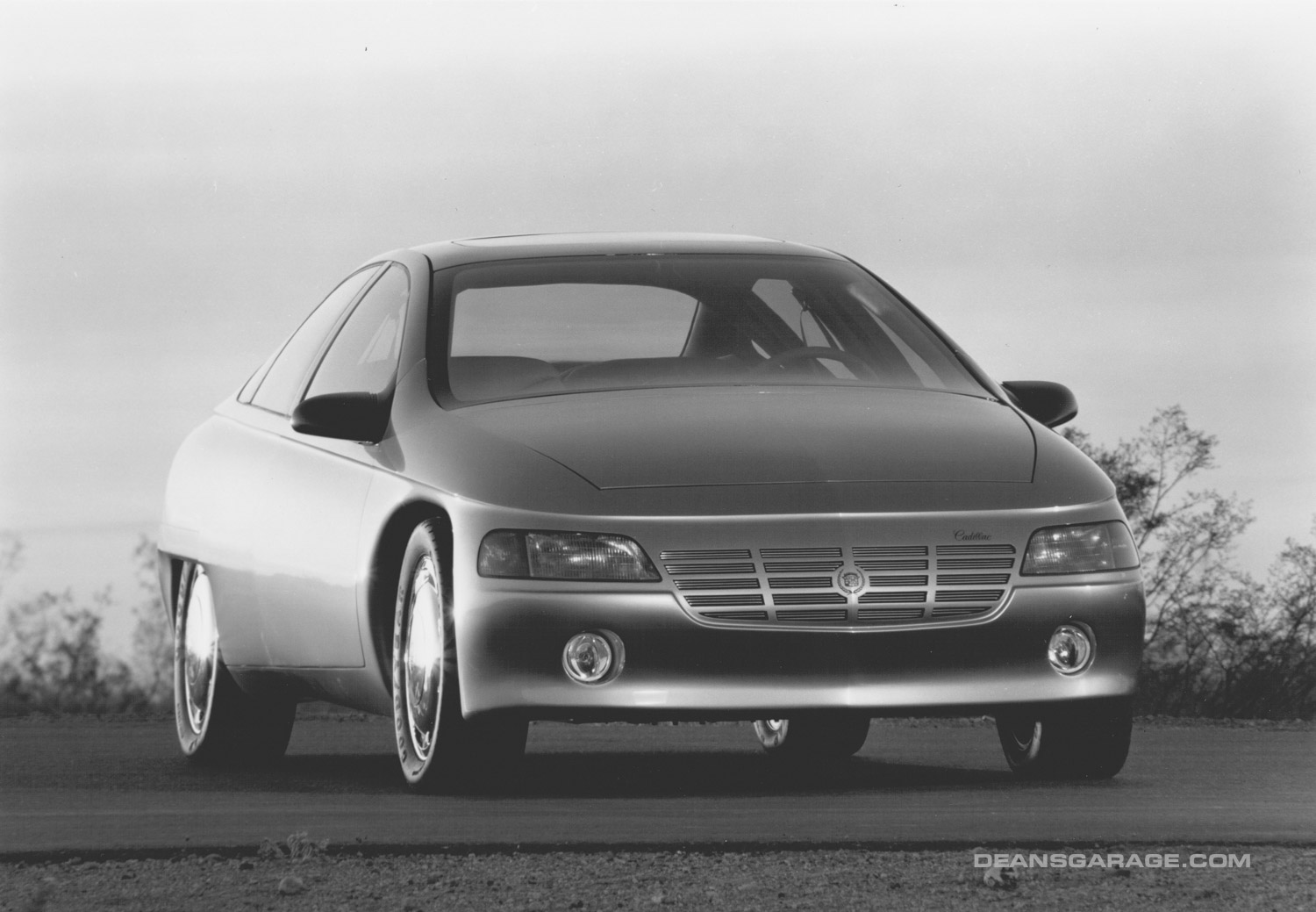
1990 Cadillac Aurora
Press Release Excerpt — Designed to look as good on the Autobahn as it does on the Interstate, the Aurora is Cadillac’s vision of a world luxury car. “This is an experiment, an all new design direction for Cadillac,” says Chuck Jordan, General Motors vice president in charge of design. “It’s a performance Cadillac, yet has a stated elegance that expresses world class design standards.” Jordan says the Aurora is like nothing else that Cadillac has ever produced and is designed to appeal to a market of potential import intenders.
“When I started at Cadillac in 1958,” Jordan recalls, “we designed large luxury cars because they were right for the times. But luxury car customers have changed, design has changed, and we’ve changed.”
Thanks to Bruce Brooks, Carlos Barba, Bill Rohlfing, and Christo Datini.
(All of the Cadillac Aurora press releases including specifications are after the galleries.)
Press Releases
DETROIT — Designed to look as good on the Autobahn as it does on the Interstate, the Aurora is Cadillac’s vision of a world luxury car. “This is an experiment, an all new design direction for Cadillac,” says Chuck Jordan, General Motors vice president in charge of design. “It’s a performance Cadillac, yet has a stated elegance that expresses world class design standards.” Jordan says the Aurora is like nothing else that Cadillac has ever produced and is designed to appeal to a market of potential import intenders.
“When I started at Cadillac in 1958,” Jordan recalls, “we designed large luxury cars because they were right for the times. But luxury car customers have changed, design has changed, and we’ve changed.”
“The new Cadillac buyer wants a beautiful, elegant automobile that provides performance and handling as well as Cadillac luxury.”
While the Aurora’s overall length of 190 inches is nearly identical to that of the current generation Eldorado and Seville, it differs dramatically with its all-wheel-drive configuration.
The longitudinal engine configuration also allows Cadillac the option for more diverse powertrains including both V-type and inline powerplants, multi-valve engines, turbo and supercharging.
“The carefully proportioned exterior design of the Aurora is straightforward and smooth with no styling gimmicks or tricks. Potential customers for a car like this are the ones who appreciate no chrome,” says Jordan.
The simplicity of design extends to the interior with its driver-oriented cockpit. The four- passenger interior is clean and simple, according to Jordan. “It has an overall feeling of uncompromised comfort and elegance that still distinguishes this car as a Cadillac.”
Unlike the seats typically found in American cars that measure 22 inches across, the seats in Aurora are nearly 24-1/2 inches. Features include easy-to-read analog gauges, separate heating controls for both driver and passenger, and seat controls that are located on the doors. The steering wheel, which features an integral airbag and hand controls for radio and cellular telephone, is located closer to the instrument panel than current production-model Cadillacs, and provides the driver with the ability to perform various functions with minimal distractions. An electronic navigational system (ETAK) is conveniently located in the driver dash pod.
The relocation forward of the transmission tunnel gives the car’s interior a more open, spacious feeling.
Though it is the third of Cadillac’s recent image cars, Jordan maintains that Aurora probably comes the closest to setting new world-class design standards. “Young designers are asking to work in the Cadillac design studio,” Jordan says. “That’s a clear indication of where we feel there’s interest. I believe we’re moving in the right direction and the Aurora is our latest example of our dedication to set the pace in luxury car design.”
DETROIT — Behind the lights and glamor of center stage at the auto show, car makers display concept vehicles, show cars and dream cars for a host of solid reasons. One manufacturer may seek publicity with a wild, one-off, styling exercise while another may want to give the press and public an accurate preview of vehicles down the road.
The Cadillac Aurora is more than an attention-getting styling exercise or “show car.” On the auto show circuit, Aurora serves a useful purpose for Cadillac’s market planners who use the vehicle as a tool to gauge public reaction and acceptance for everything from individual features to the entire international Cadillac concept.
As a research tool, Aurora follows Cadillac’s Voyage and Solitaire show cars. John O. Grettenberger, general manager of Cadillac, describes Aurora as “much more than an auto show attraction. It’s a very serious attempt to showcase present and future technology from Cadillac and determine what luxury car buyers want from us.”
Utilizing concept cars at auto shows is hardly new at Cadillac. In the 1950s, GM’s chief stylist, Harley Earl, utilized the corporation’s “Motorama” exhibits to monitor reaction to new design trends. “Frankly, it makes my styling job easier, as visitors express themselves vividly. By the time hundreds of thousands of these critics have examined your car at an exhibit, you have a firm idea of their likes and dislikes,” he said at the time.
“Aurora will be used in much the same way Cadillac used the Voyage and Solitaire, and Harley Earl used the Motorama,” says James Kornas, director of market assessment for Cadillac Motor Car.
“Voyage generated a lot of excitement when it was originally displayed to employees at GM’s Teamwork and Technology Show,” Kornas recalls. “We took Voyage to the Chicago Auto Show and asked people how they viewed the car and what it conveyed to them about Cadillac. We used Voyage as an opportunity to start gaging some level of customer reaction to technology. And we followed that with the Solitaire coupe last year.”
According to Komas, show research is also one way of quantifying excitement. “We try to find out if the car truly strikes their fancy or if it’s a ‘‘gee-whiz, wow’ type of feeling,” he says. Like previous show cars, the objective with the new Aurora is to take the excitement and setting of a vehicle that is designed to build enthusiasm and attract attention at an auto show and gamer some hard, quantifiable market research.
How accurate is auto show research and isn’t it dependent on local car-buying tastes and geographics. “Surprisingly, the results from one market to another are very similar,” Kornas says. “When you ask the same questions, you generally get the same answers, particularly with regard to price expectations, reaction to certain features, and acceptance of the vehicle in general. “Workable, drivable cars like Aurora offer product planners a powerful tool for consumer research.”
Grettenberger points out: “Aurora is a total, running, high technology concept vehicle. When you put a concept on a running chassis, as a real honest-to-goodness vehicle, it conveys to the marketplace and our competition that we are serious. It allows you not only to talk about a concept in general, but you can put people in the car and they can take a look, and see and feel it for themselves.”
Show cars like Aurora not only serve for market research or as a form of technology research, but test the waters of public acceptance. The loop also works in reverse; show cars serve the public as a preview of future vehicles. When Voyage debuted, it was equipped with a 4.5 sequential-port-fuel-injected engine with traction control. Two years later, both features are now standard equipment on the Allanté. It’s an example of how styling studies often result in real products and technology applications.
In another example, show visitors viewing the Voyage were asked how they felt about a composite material that was used in the construction of body panels. “We thought people might have a negative reaction to non-metallic panels on a Cadillac,” Kornas Says. “But our initial research with Voyage showed there was consumer confidence in the material. This gave us much more confidence when we introduced the 1989 De Ville/Fleetwood with composite-material front fenders.”
With Solitaire, Cadillac equipped the vehicle with a V-12 engine that produced more than 400 horsepower. Surprisingly, for some people it actually decreased interest in the vehicle. “Many people felt a V8 was more than enough power,” Kornas says.
Taking styling elements from show cars has a dual purpose. First, it allows market planners to investigate the impact of those styling cues on buyers of future Cadillacs and luxury car buyers in general. Second, people who came to auto shows will identify with the product easier when the production model reaches the street. “Hopefully, consumers will say ‘Oh yeah, Cadillac did show us that.’ That’s how the show car becomes a research tool as well as a product development tool,” according to Kornas.
Some of Aurora’s technology will almost certainly appear on future Cadillacs. Aurora and the features incorporated into its design are by no means as far-fetched as those that appeared on some of Harley Earl’s show cars. The ETAK system, electro-chromic sun roof, all-wheel drive with traction control, and sophisticated climate control systems may soon appear on production Cadillacs.
“Aurora gives us an opportunity not only to test a design theme and see if it is appropriate for a Cadillac buyer, but to stretch the public’s perception of what a Cadillac can be,” Kornas says. “Aurora gives us the chance to stretch the perspective that customers have of Cadillac.”
DETROIT — From its inception, Cadillac has been a world leader in automotive technological innovation. As early as 1908, Cadillac demonstrated its engineering ability to the world when it was awarded the prestigious Dewar Trophy for Automotive Excellence by the Royal Automobile Club after proving the viability of interchangeable parts.
Other Cadillac “firsts” quickly followed: electric lighting, starter and ignition in 1912; the first American production V8 passenger car engine in 1915; and laminated safety glass in 1929.
Innovations continued with the introduction of the first high compression, overhead valve V8 engine in 1949; automatic temperature control in 1964; and the first application of electronic fuel injection on an American vehicle in 1975.
In 1985, Cadillac was the first to mount a V8 engine transversely. In the past three years it has introduced the use of multiplex wiring, speed dependent damping and traction control in the ultra-luxury Allanté.
For 1990, Aurora showcases engineering standards that encompass both present and future technology and offers Cadillac the opportunity to spotlight its vision of an international high performance sedan.
ENGINEERED FOR THE WORLD
No longer merely an American, European or Japanese market, today’s luxury cars must compete in a global marketplace. A car designed in Europe or the Far East may often find its greatest acceptance in the United States. For Cadillac, Aurora not only represents a radical departure from current-design Cadillacs, but a vehicle that is engineered and designed to compete aggressively in the world market for luxury cars.
“This is a very serious effort to showcase present and future technology of Cadillac,” says John Grettenberger, General Motors vice president and general manager of Cadillac. “Aurora is designed to be much more than an auto show attraction. Some of the features incorporated into the Aurora, such as Traction-Control, the 4.5 liter SPFI engine, and electronically adjustable struts, are already used in selected Cadillac models.”
Other features, including all-wheel-drive, four-passenger inflatable restraints and a sunroof that the driver can adjust automatically to darken, could easily be adapted into future Cadillacs. “Two years ago when we introduced our Voyage concept car, hardly anyone took the traction control system seriously,” Grettenberger says. “Today, it’s an award winning component on our Allanté.”
While the powerplant of the Aurora is adapted from the transverse-mounted Allanté 4.5 liter V8, the longitudinal configuration mated with all-wheel-drive represents a departure from current front-wheel-drive Cadillac models.
The Aurora engine develops 200 bhp at 4400 rpm and 270 ft Ibs of torque at 3200 rpm. Constructed with an aluminum block and cast iron cylinder heads, the engine can withstand rigors of high performance driving environments. Fuel delivery is through a tuned port-fuel-injected system adapted from the Allanté engine. Internal components include cast iron main bearing caps, nodular iron crankshaft, and low friction main bearings. Roller lifters, cast aluminum pistons and low-tension ring assemblies are also used to lessen friction.
The Aurora retains the flexibility to package the various types of engines typically found in international sedans.
Power is shifted through a THM 700 R4 four-speed automatic transmission equipped with overdrive. Final rear drive ratio is 3.06:1. In keeping with its worldwide market goals, Aurora can also be equipped with a six-speed ZF manual transmission.
For optimum performance in less-than-ideal driving conditions, the Aurora has full time all-wheel-drive. The transfer case features a bevel gear inter-axle differential with viscous coupling and three-gear transfer set. Torque split is 50/50.
ALL-WHEEL-DRIVE AND TRACTION-CONTROL
Aurora is built on an all-wheel-drive platform. The system is new, and not based on anything currently in the GM lineup. All-wheel-drive offers the ability to engineer levels of ride, handling, braking, and performance which cannot be met by front-drive or even a rear-drive high performance design. In a powerful car, the superior grip and consistent handling capabilities of AWD provide useful benefits on dry roads as well as under slippery conditions.
‘Unlike other AWD vehicles, however, Aurora’s fully open differentials maintain a fixed torque split under normal driving conditions. To prevent wheelspin in unusual driving conditions, Aurora employs a four-wheel Traction-Control system. This is a further development of the system presently installed as standard equipment on the Cadillac Allanté. The Aurora’s Traction-Control system uses the wheel speed sensors of the anti-lock braking system to detect wheelspin. The brake on that wheel is then gently pulsed to reduce spin. If spin continues beyond three seconds, the engine begins to reduce power output by restricting fuel delivery to the cylinders. The engine management system progressively cuts out one cylinder every three seconds or as required, until only four cylinders are active.
CHASSIS AND COMPUTER COMMAND RIDE
Aurora uses a rigid torque tube to connect the front-mounted engine/transmission package to the rear differential. The torque tube completely isolates the driveline and frame from the passenger compartment to reduce interior noise level.
Aurora’s all-wheel drive system includes a unique front-drive unit which allows the engine to be packaged low in the chassis. The front drive shaft passes forward from the transfer case to the front drive differential to the axle shafts which pass through the engine oil sump system. :
Aurora uses a conventional MacPherson strut front suspension and a unique, fully independent rear suspension. Like the Allanté, the shock absorbers of Aurora’s Computer Command Ride feature automatically adjusting shock valving for a comfortable ride at low speeds, firm control at higher speeds, and stability under braking and acceleration.
Aurora is equipped with disc brakes all around and ventilated front rotors. Aurora uses a Bosch ABS system. The ABS wheel speed sensors, which also serve the Traction-Control system, are built directly into the wheel bearings.
ETAK NAVIGATION SYSTEM
In-car navigation systems are now available, and are being installed by individuals as well as fleet operators. The ETAK system installed in Aurora uses a CD-ROM which can store maps for the entire United States.
ETAK is based on a dead-reckoning system which uses a magnetic compass and wheel speed along with a sophisticated algorithm to compute vehicle location. Aurora’s ETAK maps are displayed on a working full-color flat-screen liquid crystal display.
INTERIOR ENGINEERING
Aurora’s interior engineering is as progressive as its mechanical pedigree. The driver faces a functional, fully-equipped instrument panel with analog gauges.
Despite the stronger emphasis on driver environment, Aurora’s passengers have not been neglected. The front power seats are fully functional. The driver’s seat is equipped with memory; when the door is opened, the seat slides back and the steering wheel swings up and out of the way for easier entry or exit. When the door is closed, seat and wheel return to the memorized position. All seats are heated.
Cadillac has built a reputation for safety over the years, a tradition which Aurora continues.
Each occupant is protected by a supplemental inflatable restraint system (airbags).
Aurora’s state-of-the-art sound system is built around an array of ten Delco speakers, an AM/FM radio and a CD changer, which allows quick, easy access to as many as six discs.
The communications link so important in both business and pleasure is provided by a hands-free, voice activated cellular phone, using the audio system’s speakers and a dash-mounted microphone. Also included is a portable cellular telephone which features a top-loaded mono-pole unit located in the rear decklid. The Aurora also uses a new, slot-type antenna system that is mounted in the headliner for the AM/FM radio.
Behind the passenger compartment, Aurora carries a fully detailed trunk including a tool kit and the CD changer.
In short, Aurora provides a full complement of interior comfort and convenience features exactly what one would expect of a Cadillac. With its convenience features, all-wheel drive chassis, and superb four-passenger comfort, Aurora enhances Cadillac’s position and stature as a world luxury car and could provide exciting vistas for luxury car buyers.
DETROIT — Inspired by Cadillac and General Motors Design, the Aurora was actually constructed by a third party, Triad Services Inc., of Troy, MI.
Triad first became involved with the project in May 1989 after viewing the scale model at GM Design Staff. “It was an early interpretation of the car with some basic design features,” explains Bill Rohlfing, project manager at Triad. “Once Design Staff agreed on the general theme of the car, work began on a full size clay model.”
A full fiberglass model, cast over the original clay model was produced by Design Staff and delivered, unfinished, to Triad for final surfacing and detailing of the body. Once completed, the normal body build process, including tooling for doors, hood, trunk and individual fiberglass body panels, was initiated.
“We spent about two weeks detailing the body and another four weeks with the tooling process,” Rohlfing says. “In the meantime, other areas of the company were working simultaneously on the vehicle structure including greenhouse, door and hinge structures, window mechanisms and packaging for the new driveline and underbody.”
While the outer body of the vehicle is constructed of fiberglass, all the motor compartment panels, firewall, strut towers and motor rails are hand fabricated for the one-of-a-kind show car.
In addition to the body of the car, Triad was also responsible for the all-wheel drive chassis of Aurora. Utilizing a General Motors platform, which is currently used on production of Cadillac Eldorado and Seville models, construction of the all-wheel-driveline and suspension was started.
“We have had a lot of experience with this particular platform in the past three years,” Rohlfing says. “It was used with both Voyage and Solitaire, so we’re pretty familiar with what can and can’t be done with the engine and driveline of that particular chassis.”
As in most show vehicles, there is an extensive array of electronic hardware—most of which is not readily available in production. Modifications must be made to existing components and the wiring harnesses. “You try and use existing components wherever possible,” Rohlfing explains, “but, generally, there’s an awful lot of work that has to be done in terms of electronics. If something has to be fabricated, we work very closely with Fisher Guide, Delco Products, Saginaw Division and Inland Fisher Guide. It’s really a team effort to get one of these vehicles together.”
One of the primary advantages of working with outside development firms like Triad is reduced turnaround times and the flexibility to incorporate changes with minimal interference. “If the design or concept changes, there’s very little time or money lost,” Rohlfing explains. “While these cars aren’t cheap, they are a real benefit when it comes to commitments that are made with regard to the decision and manufacturing process.
“It’s a way for corporations like General Motors to turn around ideas very quickly. The new car process starts in the Design Studio with individuals from marketing providing direction to the designers. But once all the drawings, renderings and scale models are completed, the next process, for us, is to take all those lines from a piece of paper and develop a real, three dimensional, running prototype.”
Completed in less than seven months, the Aurora will debut at the North American International Auto Show in Detroit and will be displayed January 3–14.
SHOW LOCATION DATE
North American Intl. Auto Show, Cobo Hall January 6–14, 1990, Detroit, Michigan
Chicago Auto Show, McCormick Place, February 10–18, 199, Chicago, Illinois
Geneva Auto Show Palexpo, Grand Saconnex, March 6–18, 1990, Geneva, Switzerland
New York Intl. Auto Show, Javits Convention Center, April 14–22, 1990, New York, New York
VEHICLE SPECIFICATIONS
Front engine, all-wheel-drive four-door high performance sedan.
ENGINE
High-output longitudinally-mounted V8 aluminum block, iron cylinder liners, cast iron cylinder heads.
Bore X Stroke: 3.62 X 3.31 in. (92.0 x 84.0 mm)
Displacement: 275 cu. in. (4467 cc)
Compression Ratio: (.0:1
Power Output: 200 bhp (149 kW) @ 4400 rpm
Torque: 270 Ibs.-ft. (366 Nm) @ 3200 rpm
Fuel Delivery: Sequential multi-port electronic fuel injection
Fuel Requirement: Premium unleaded
Valve Train: 2 Valves/cylinder, chain-driven cam in block, pushrods, roller followers with hydraulic lifters.
DRIVETRAIN
All-wheel-drive, open front, center and rear differentials with traction control on all wheels.
TRANSMISSION
Four-speed automatic with overdrive (THM 700 R4).
Gear Ratio final drive: 3.06
TRANSFER CASE
Cast aluminum gearcase incorporating torque tube flange. Bevel gear inter-axle differential with viscous coupling. Three gear transfer set. 50/50 torque split.
REAR PROPELLER SHAFT
Aluminum tube enclosing solid drive shaft with single Cardan universal joints.
FRONT PROPELLER SHAFT
Open tubular shaft with constant velocity joints.
FRONT DRIVE
Aluminum gearcase integral with engine sump. Spiral bevel final drive gears. Two gear offset drives to front drive axles. Open bevel gear front axle differential. Constant velocity front drive axles. Ratio 3.06.
REAR AXLE
Cast aluminum gearcase incorporating torque tube flange. Open bevel gear rear axle differential. Constant velocity rear drive axles. Ratio 3.06. |
DIMENSIONS AND CAPACITIES
Curb Weight: 3500 lbs.
Wheelbase: 112.2”
Track, front: 59.0”
Track, rear: 60.6”
Length: 190.9”
Width, overall: 74.0”
Height: 55.3”
Headroom, front: 37.9”
Headroom, rear: 37.8”
Hip room, front: 53.0”
Hip room, rear: 54.8”
Shoulder room, front: 58.6”
Shoulder room, rear: 57.8”
STEERING, SUSPENSION, BRAKES
Steering type: Recirculating ball, speed-sensitive power assist.
Front suspension: MacPherson struts, electronically controlled variable orifice shock absorbers.
Rear suspension: Fully independent, transverse monoleaf springs, front and rear integral electronic variable orifice shocks.
Wheels: Cast alloy, 18 x 7 in.
Tires: Goodyear 225/55 R18
Brakes, front: 10.25 X 1.0 in. (260.4 x 25.4 mm) vented discs
Brakes, rear: 10.25 X 0.5 in. (254.0 x 12.7 mm) solid discs Bosch anti-lock braking system (ABS) standard.

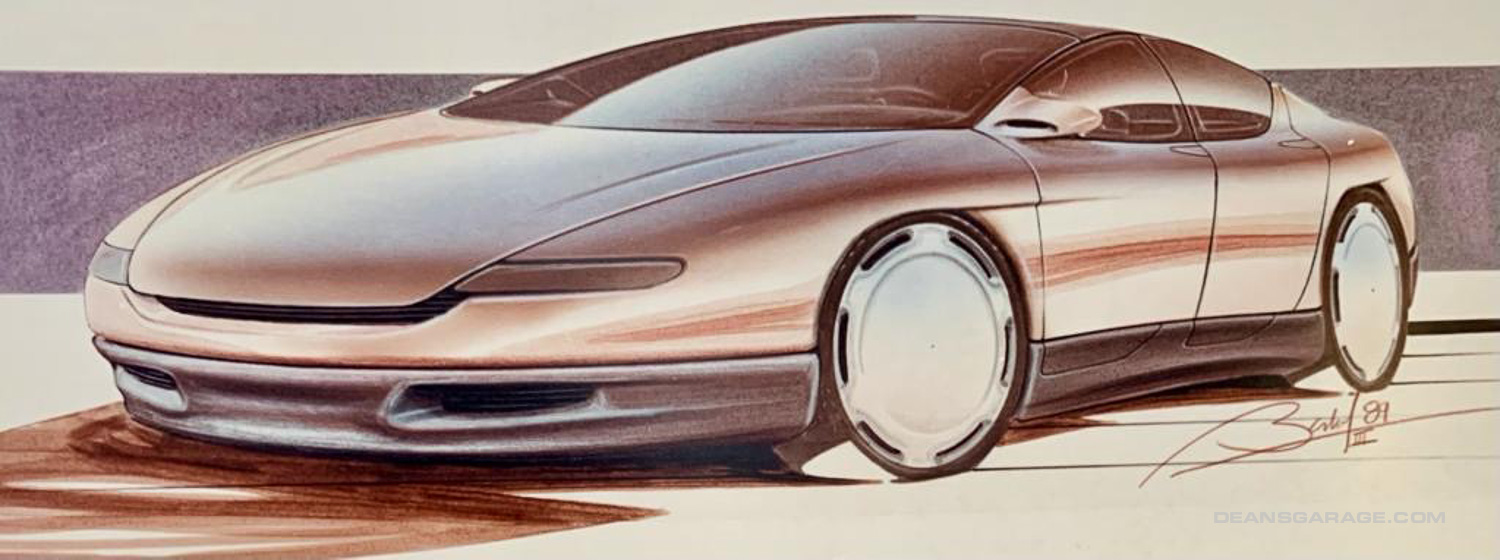
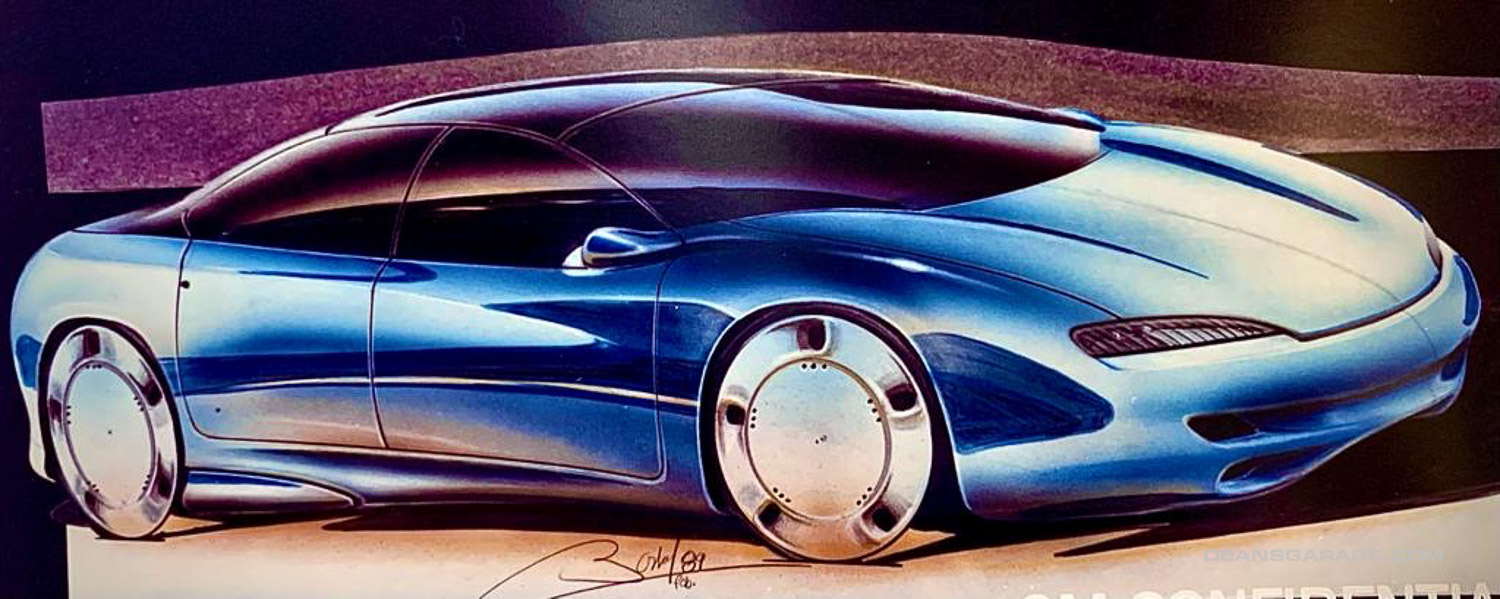
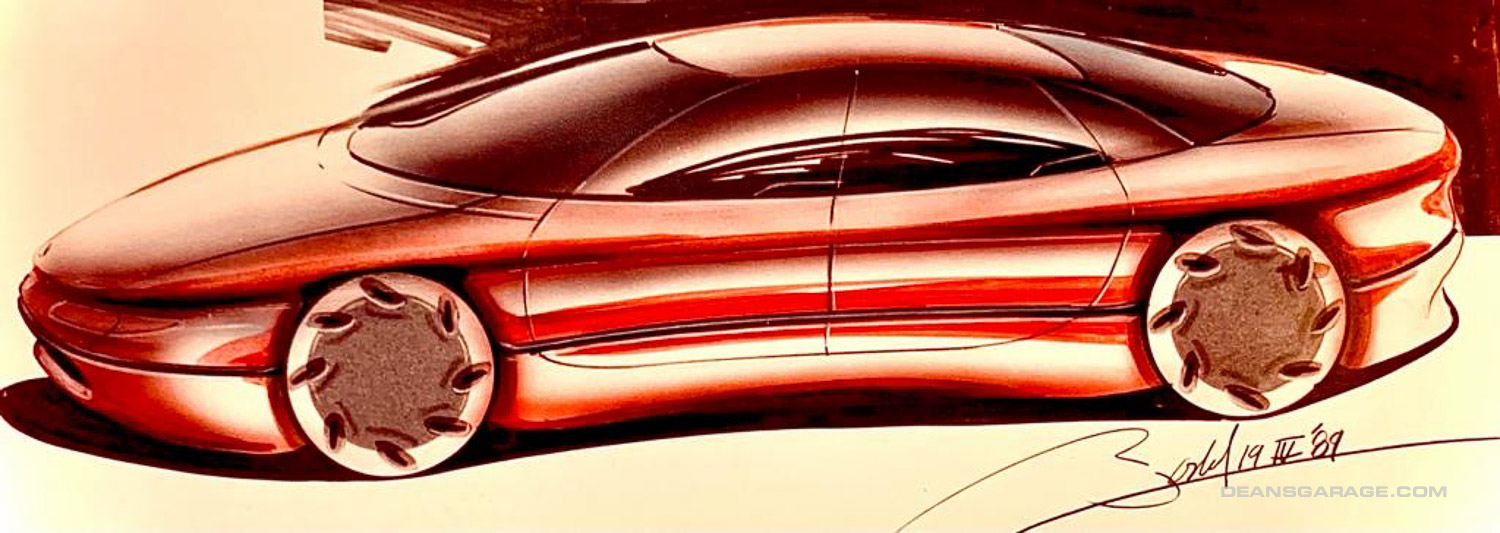
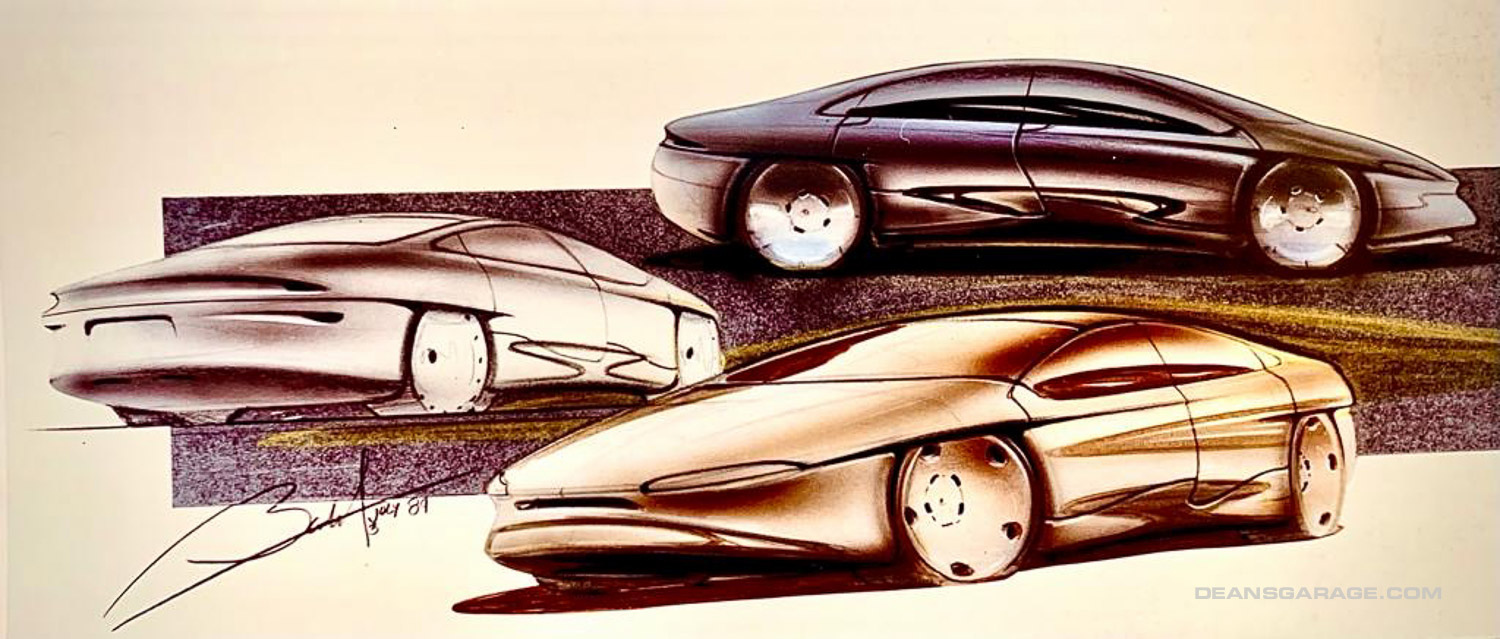
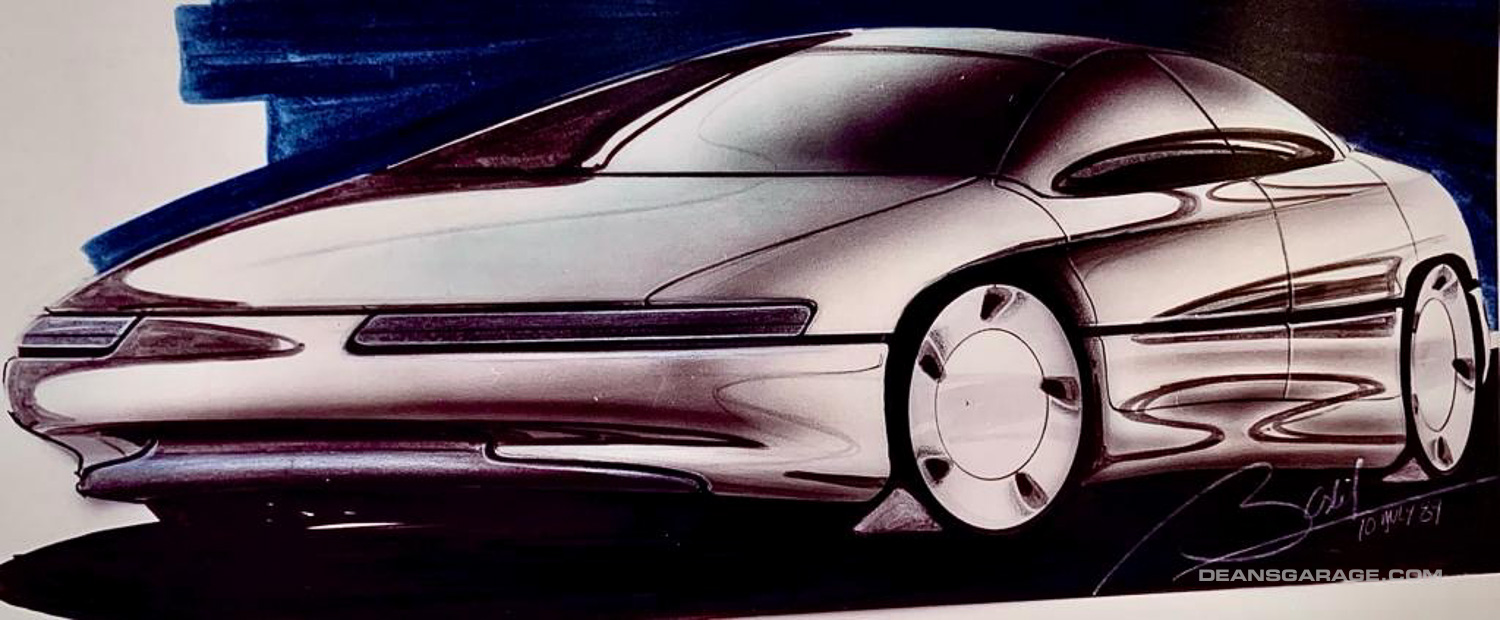
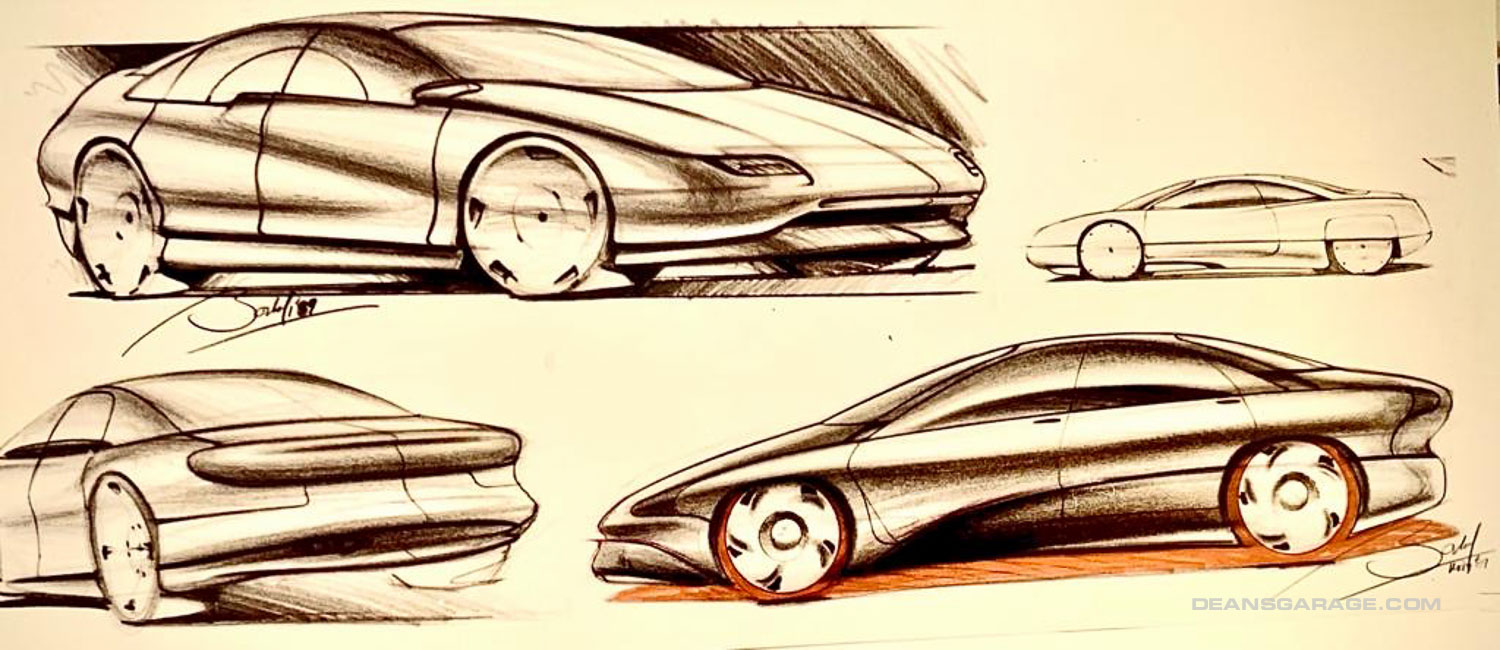
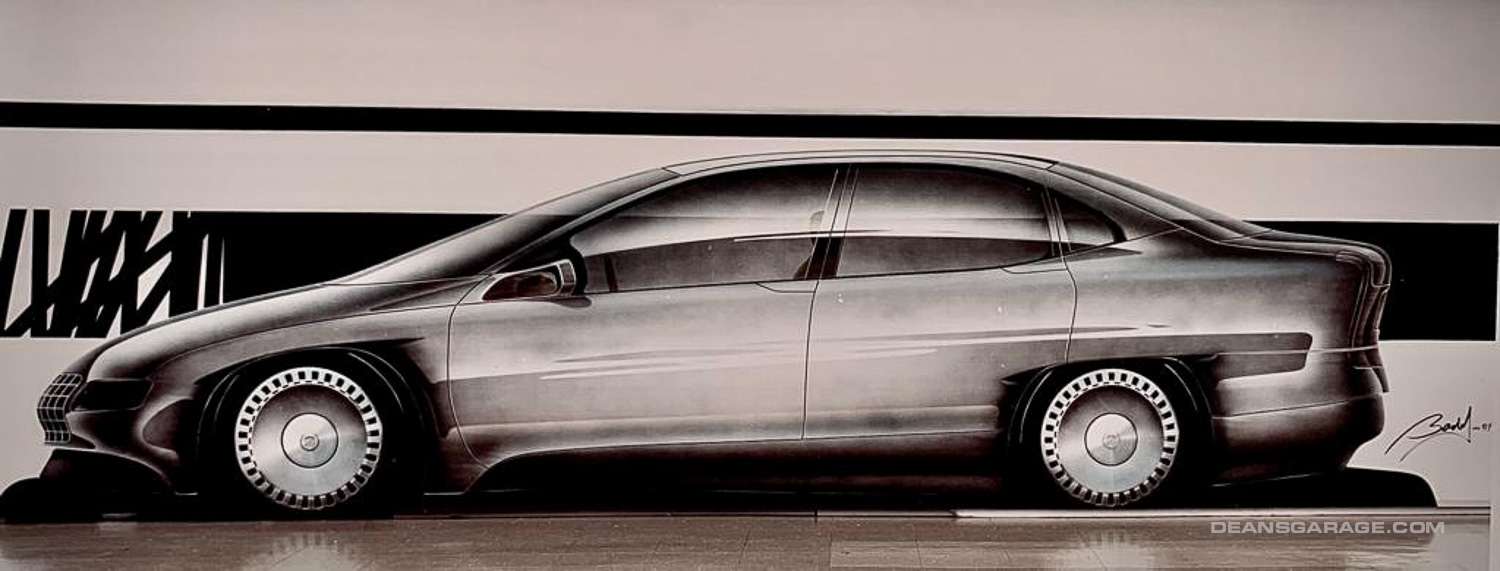
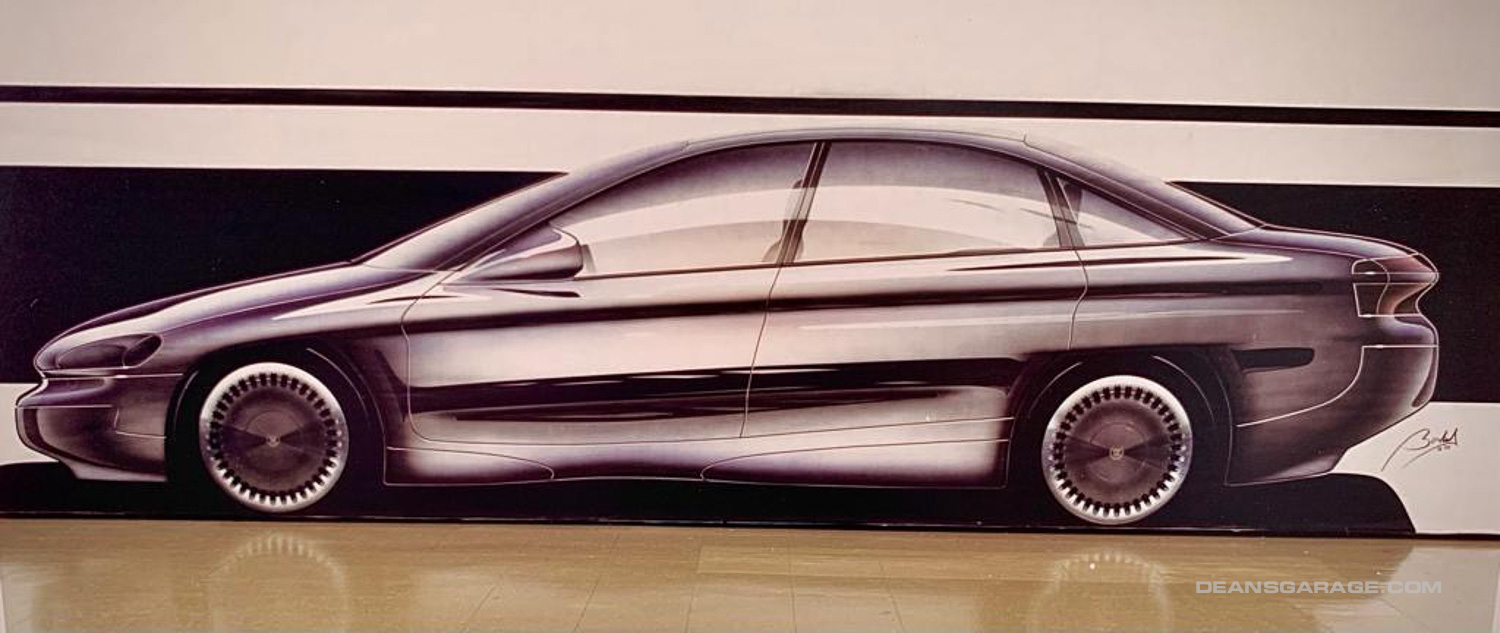
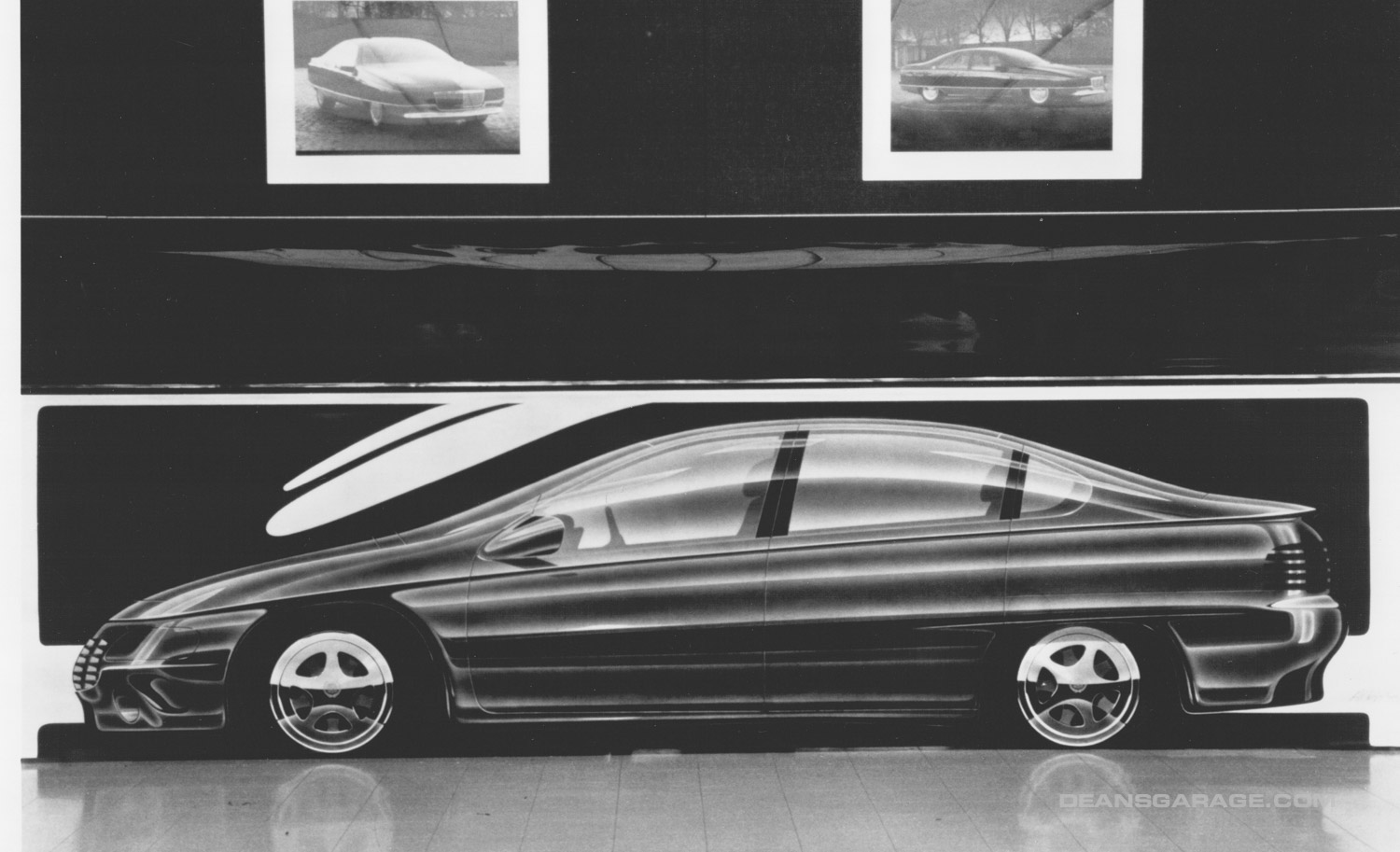
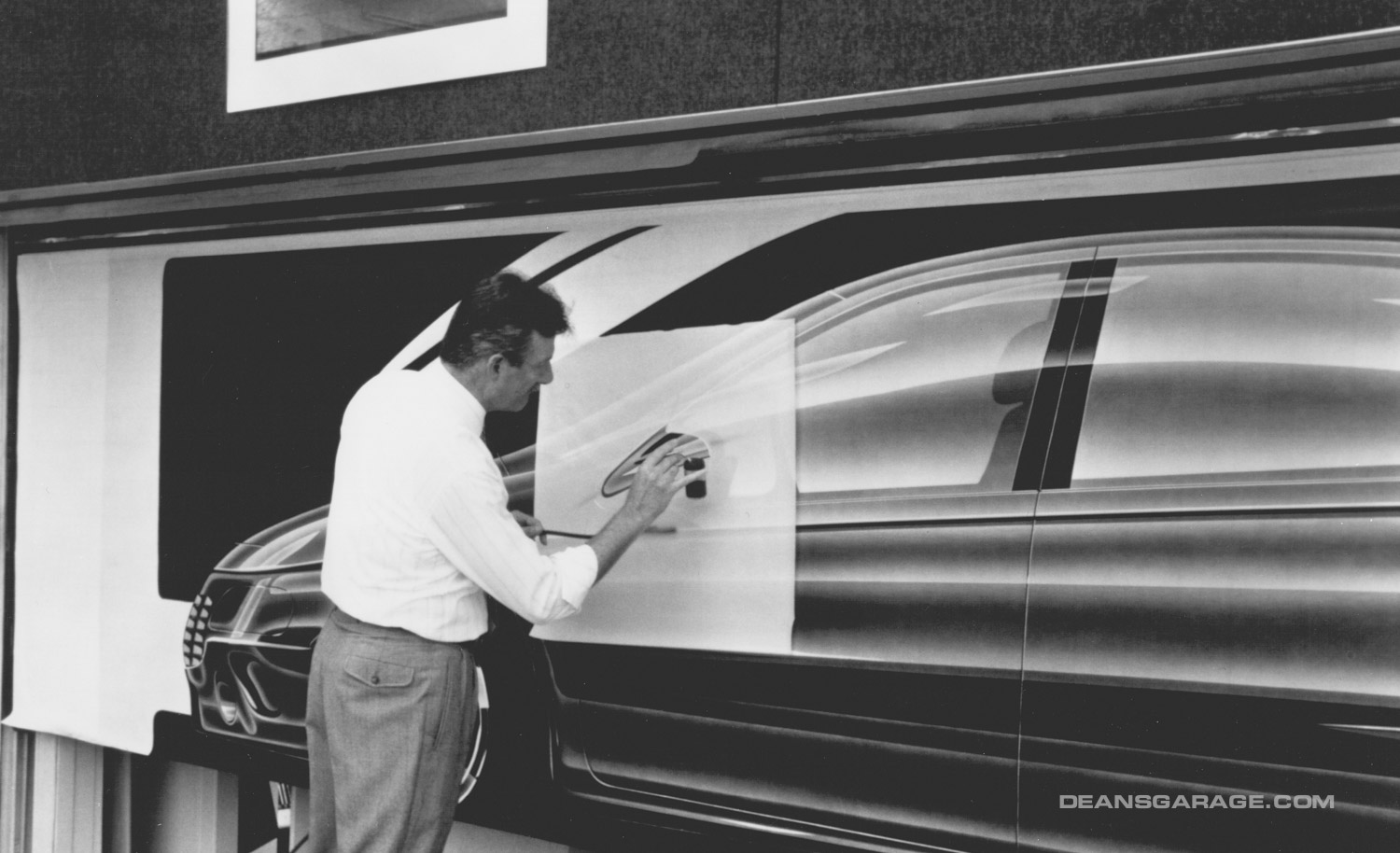
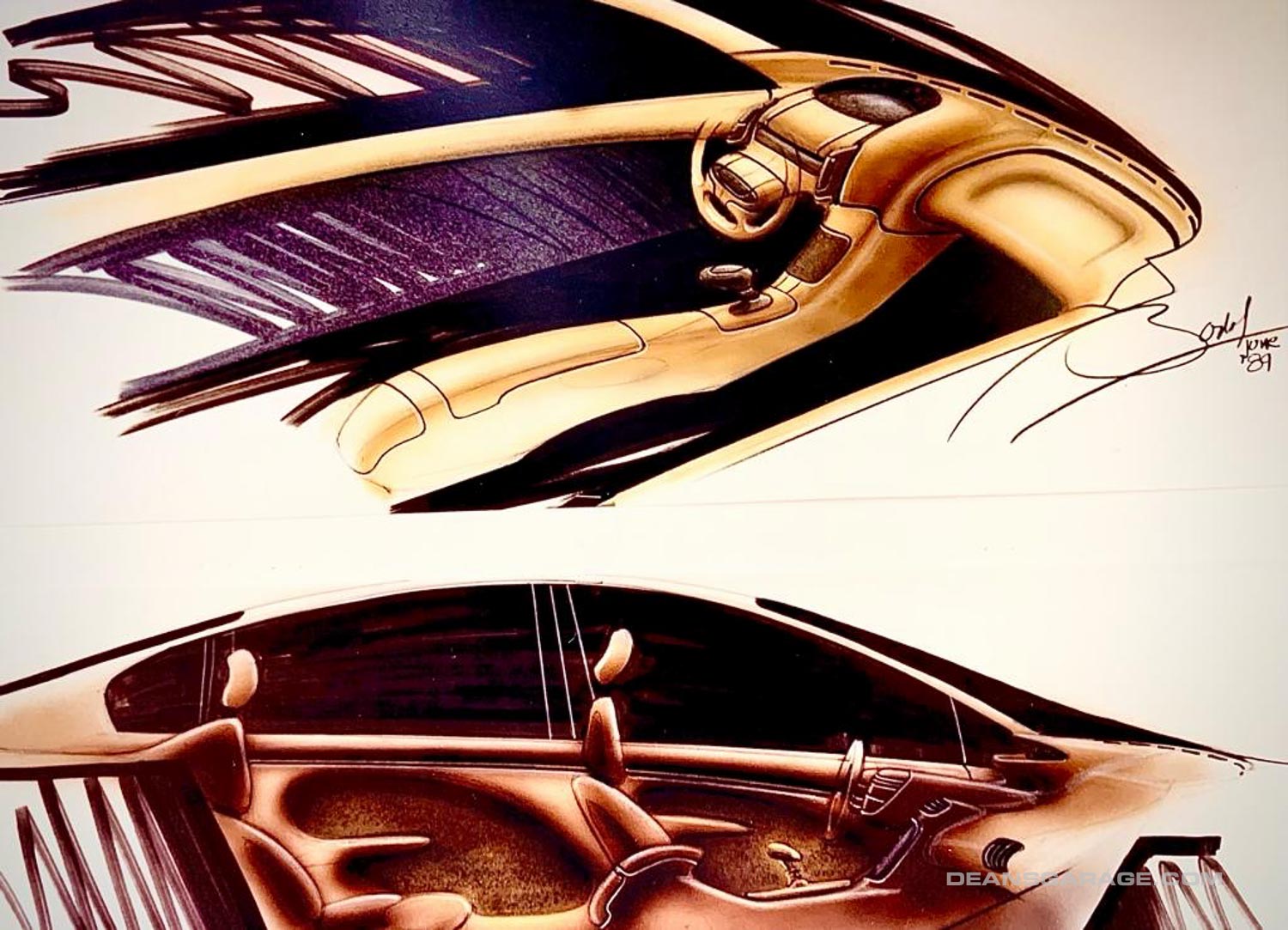
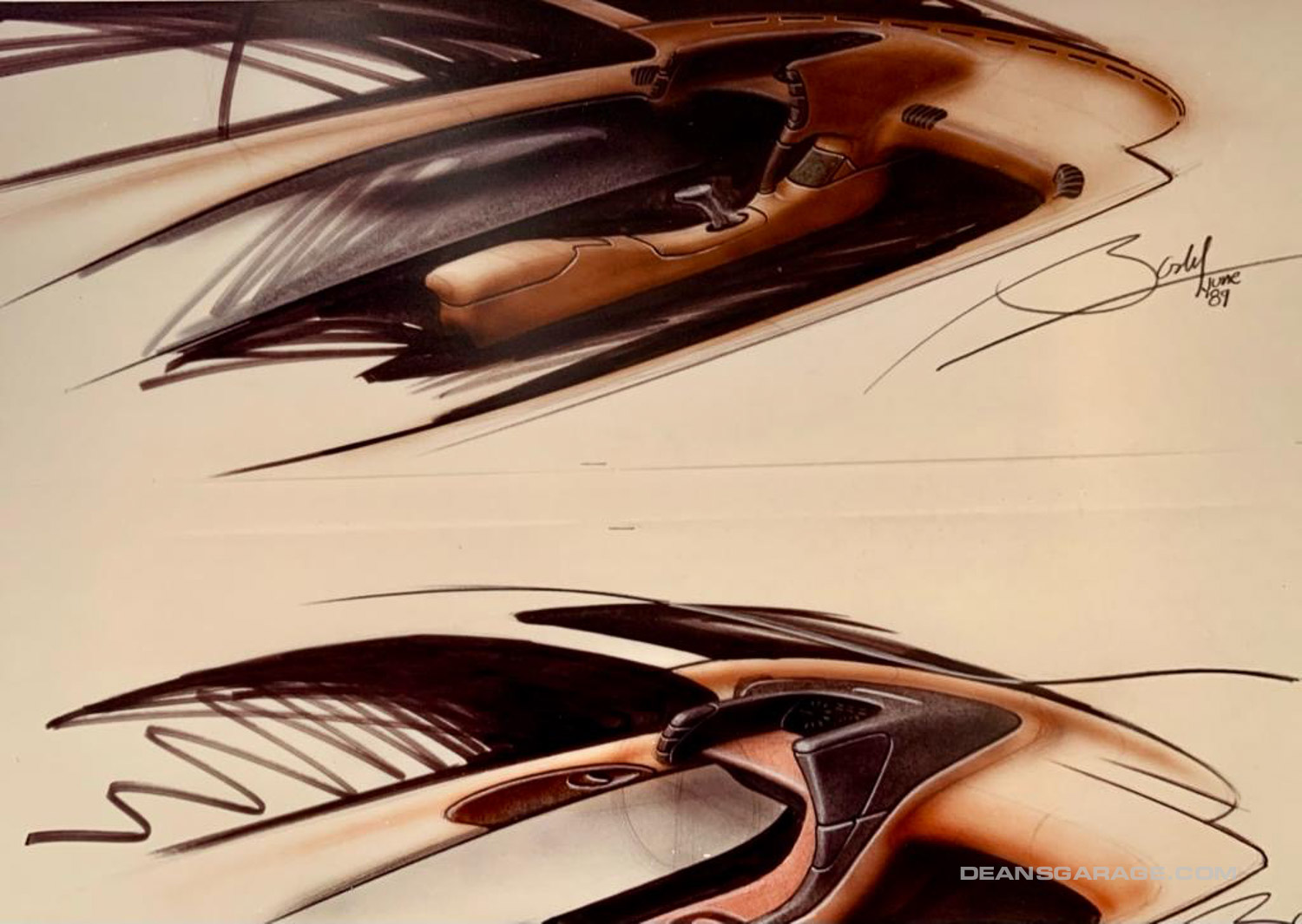
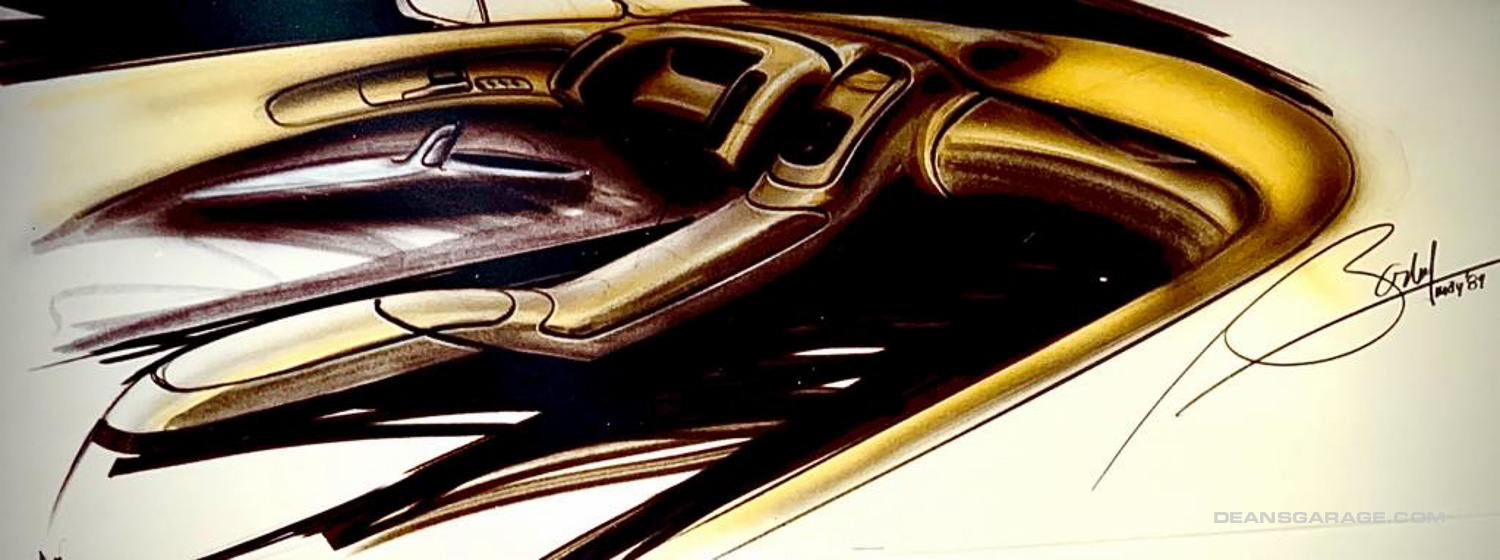
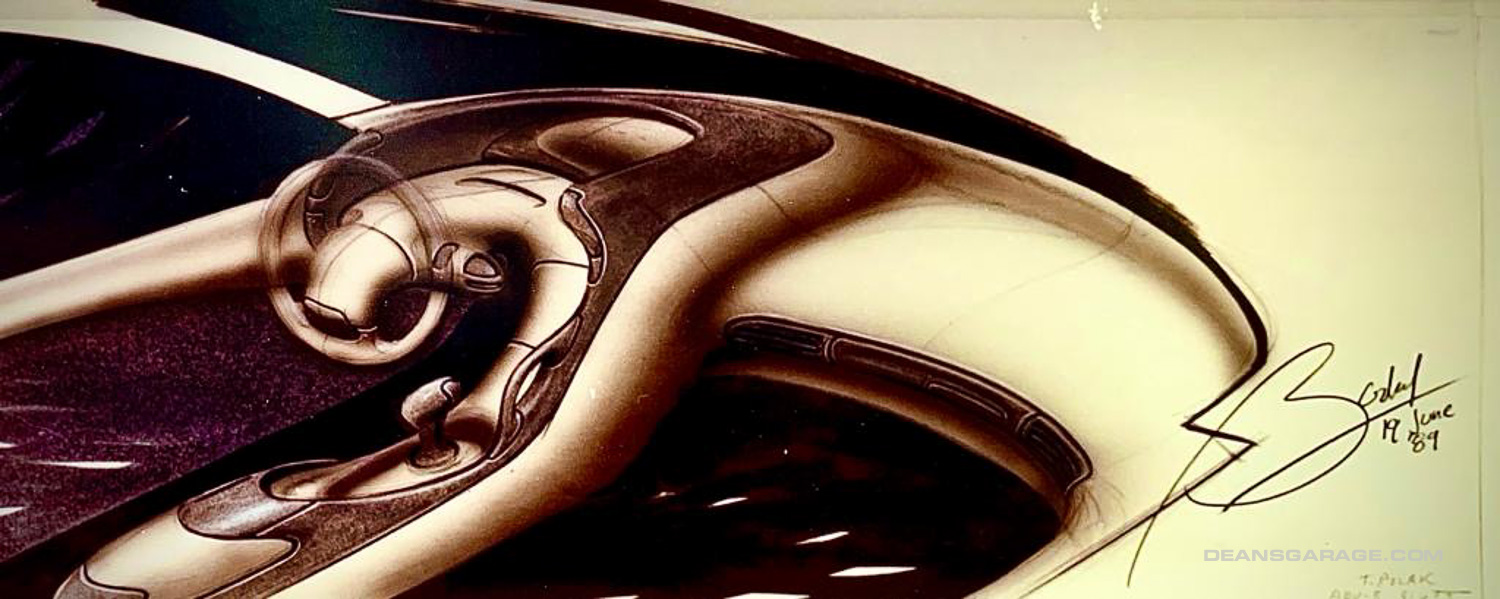
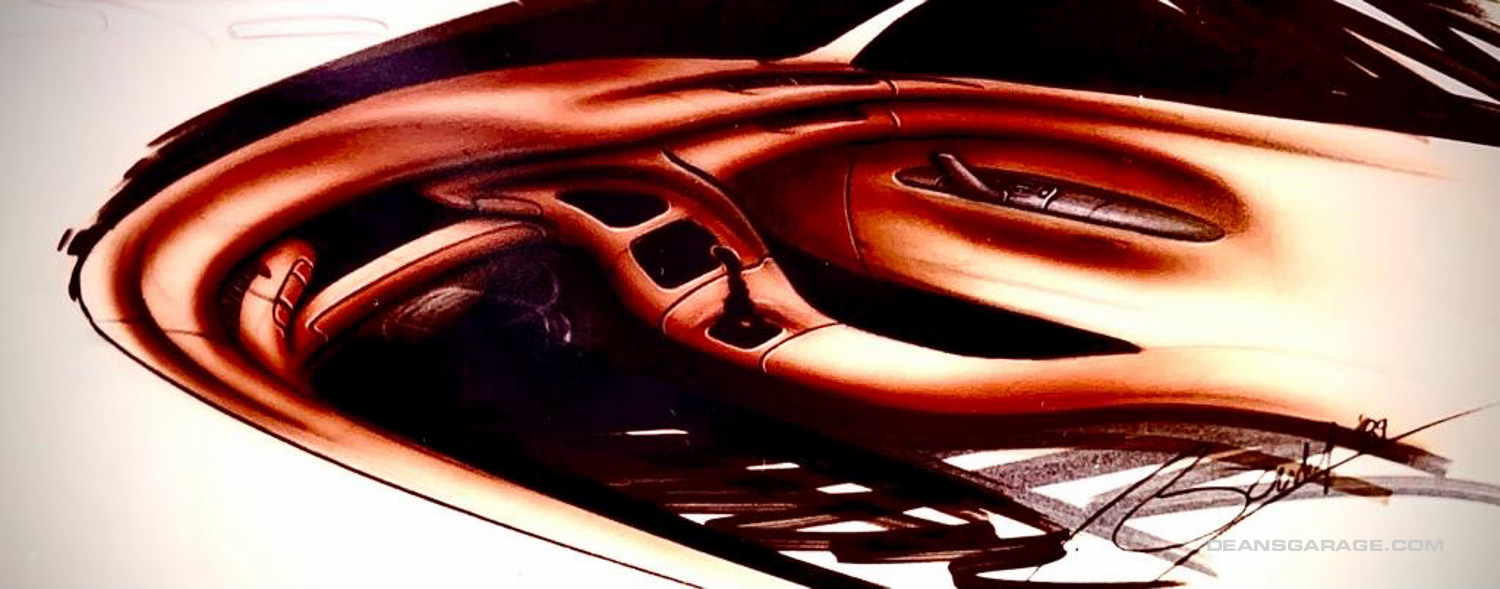
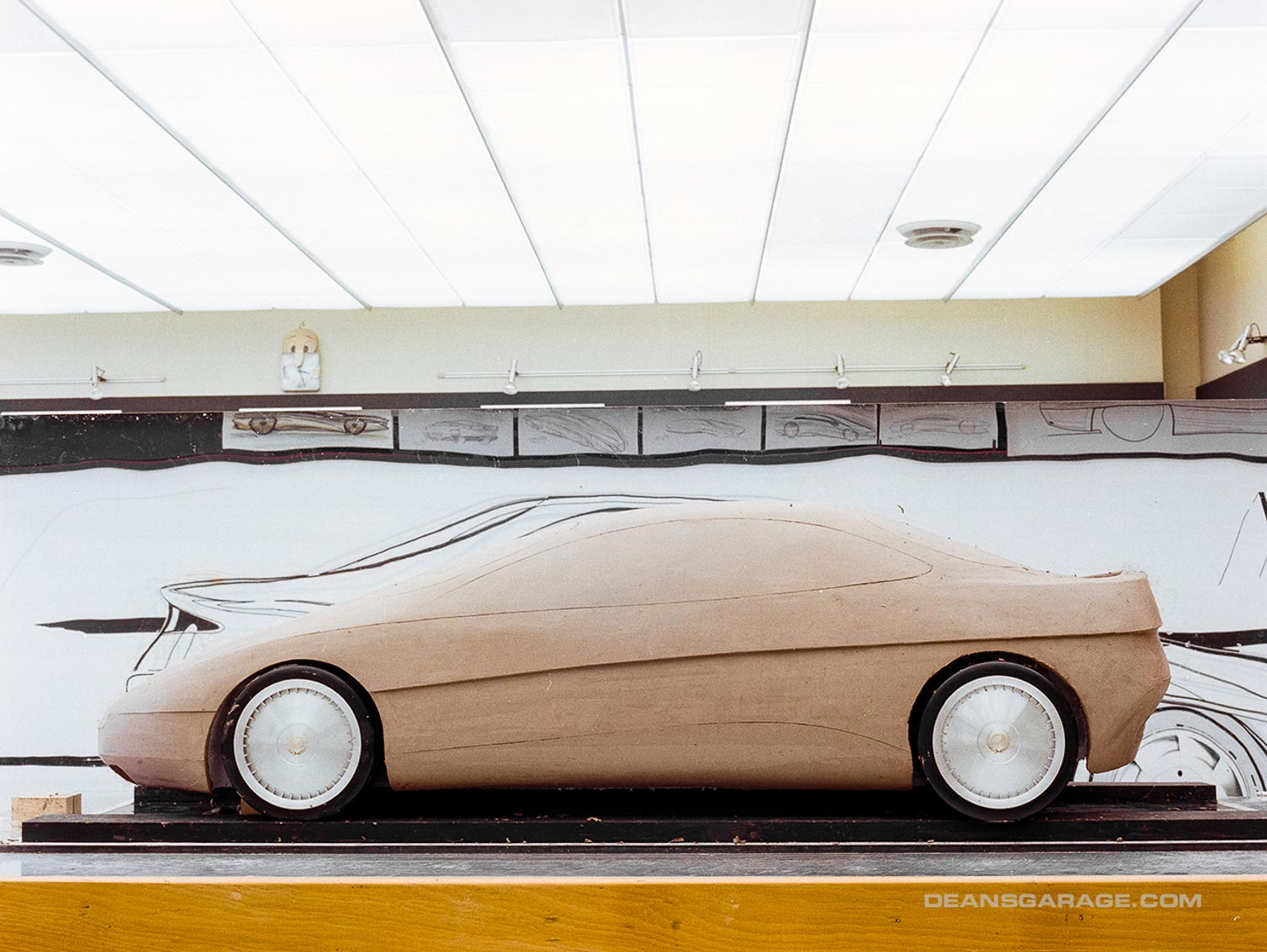
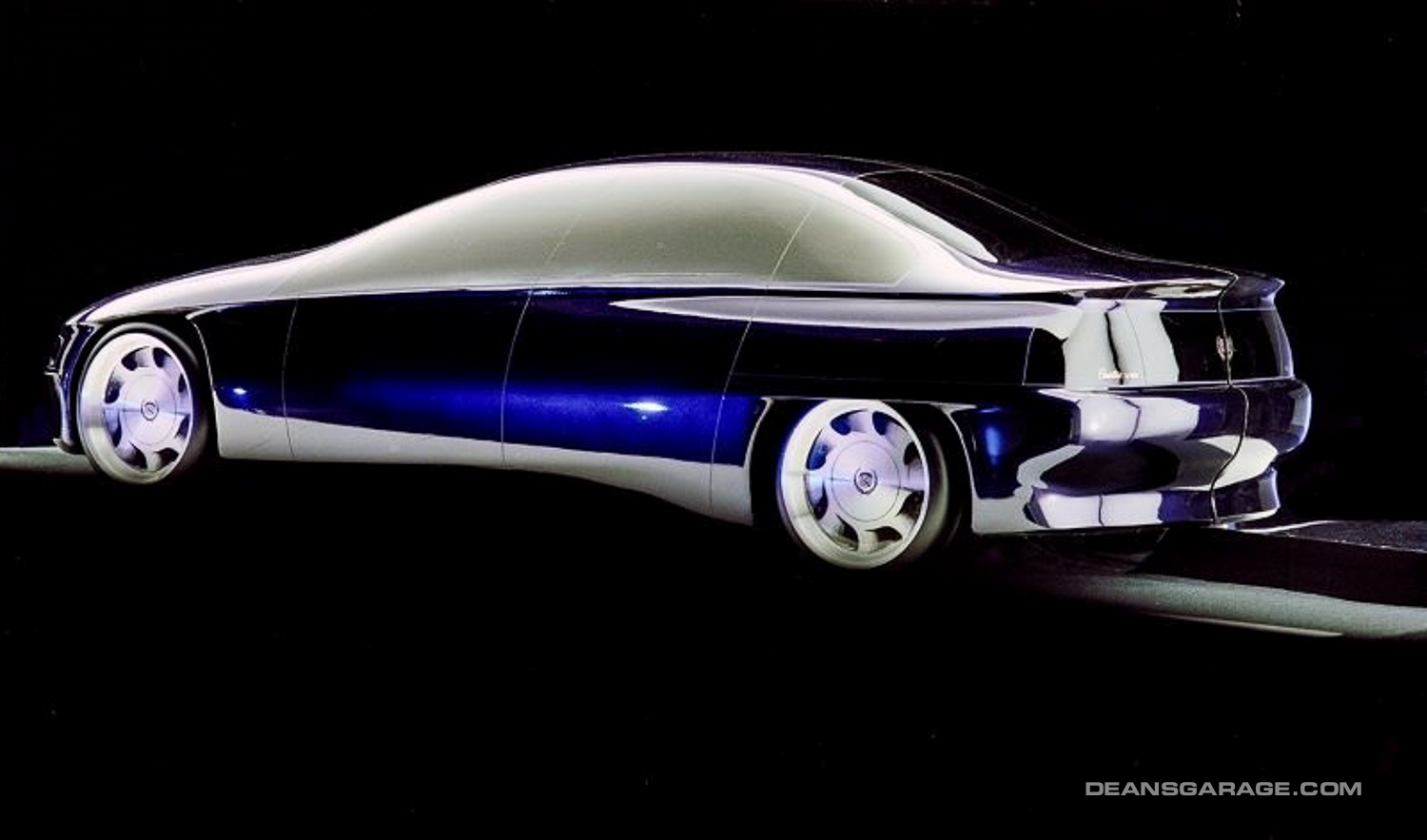
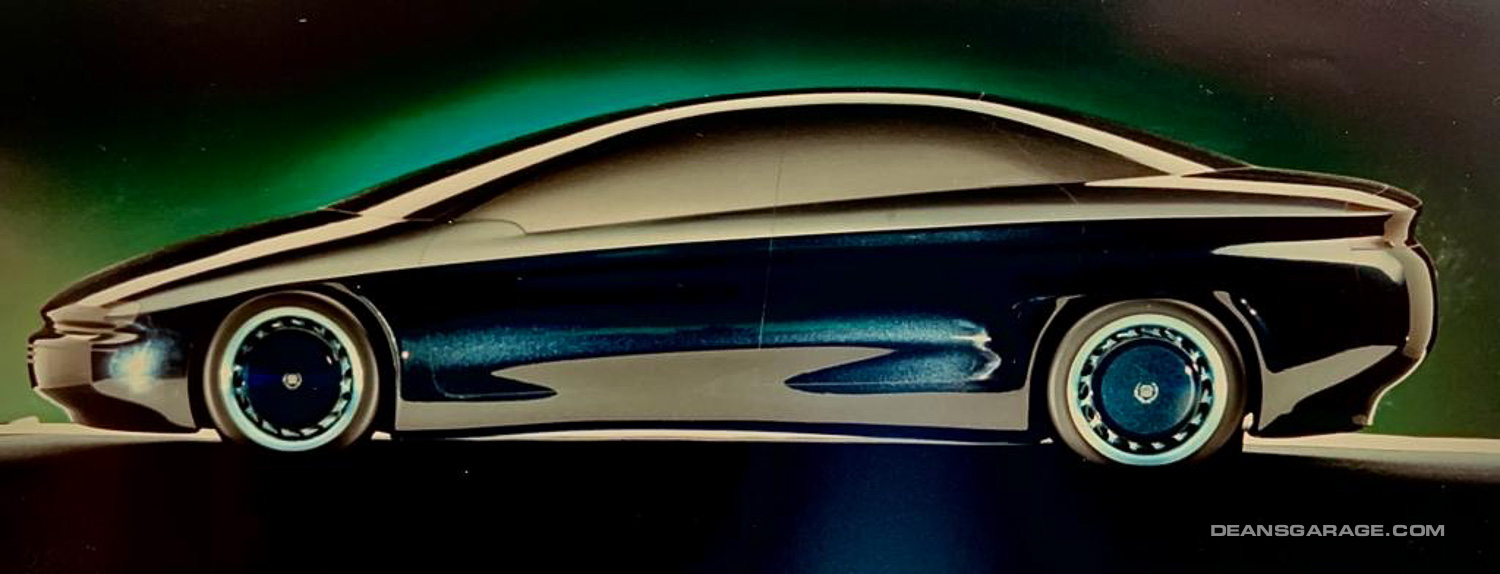
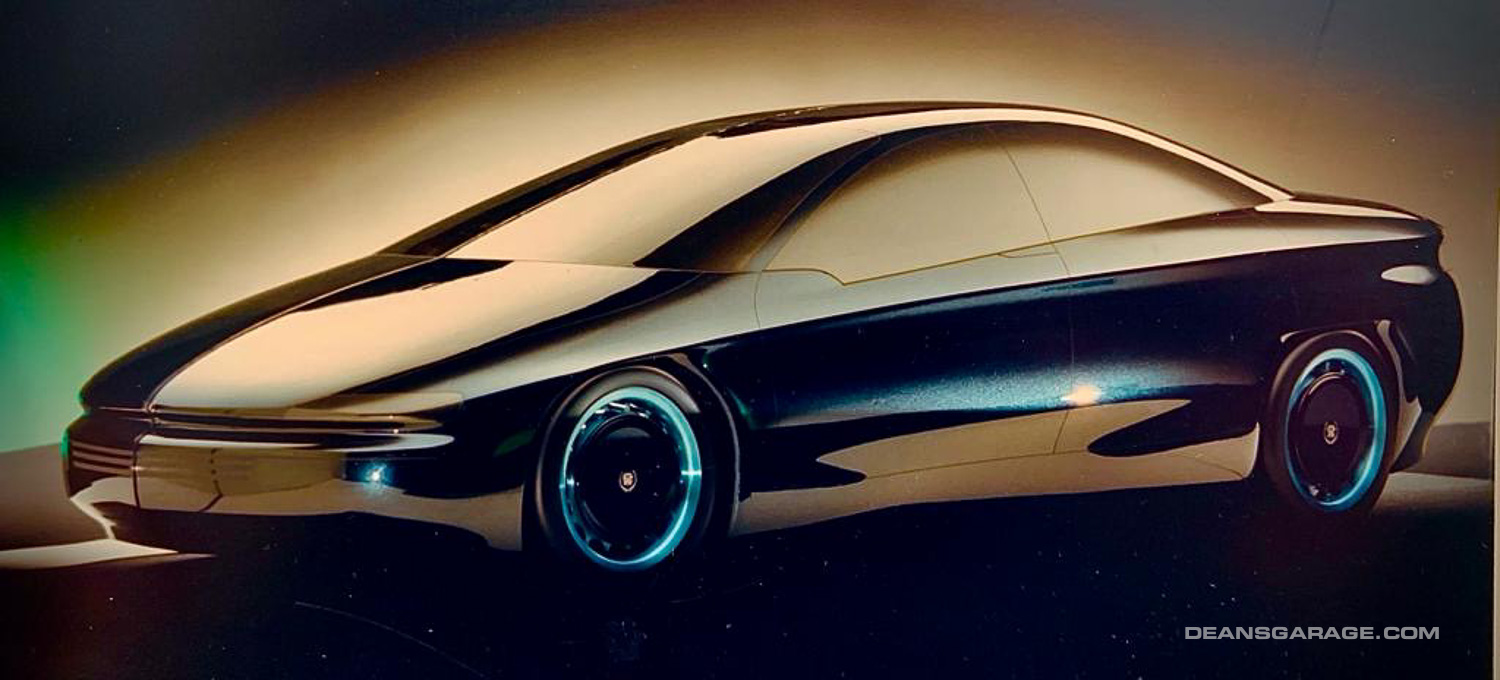
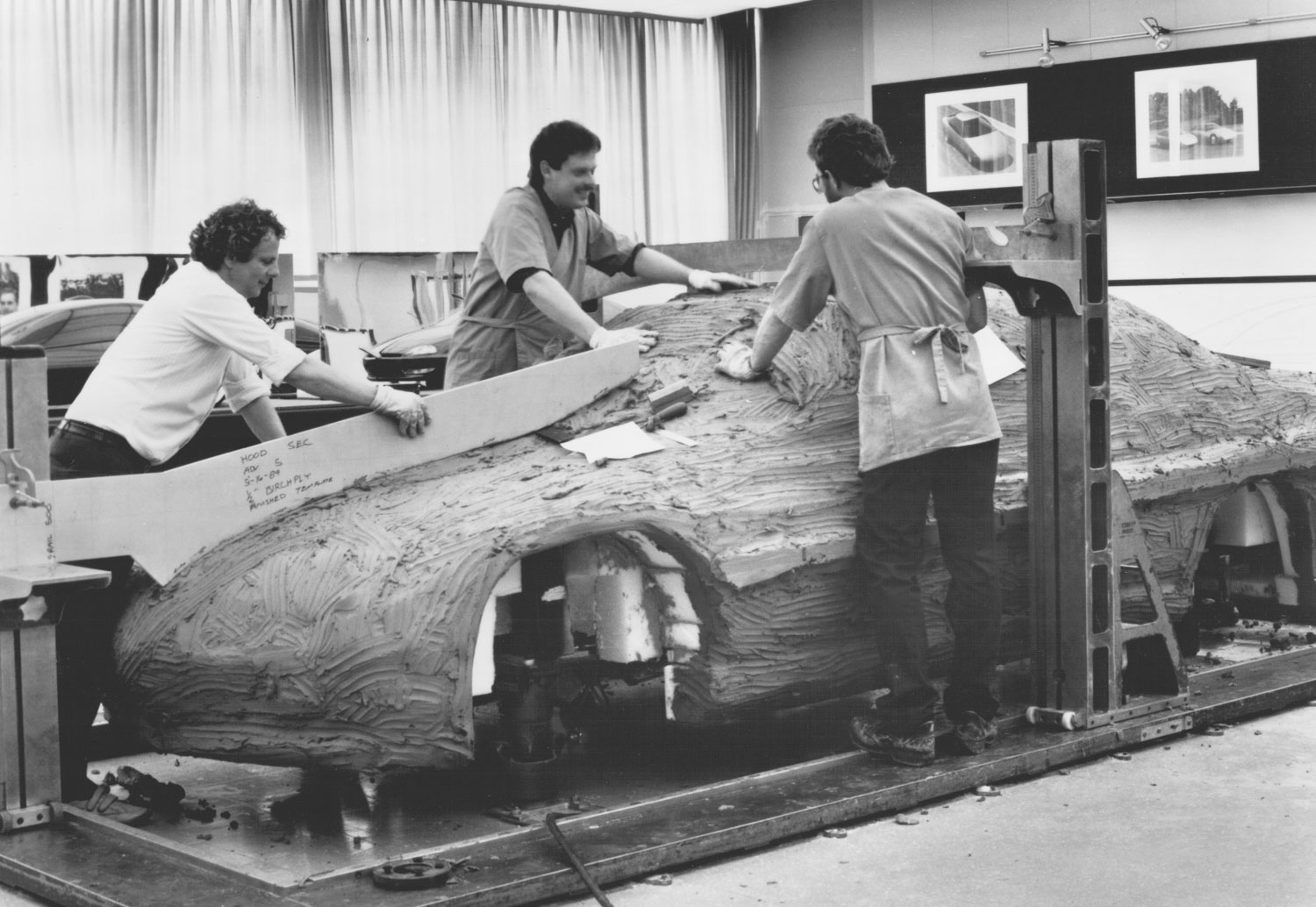
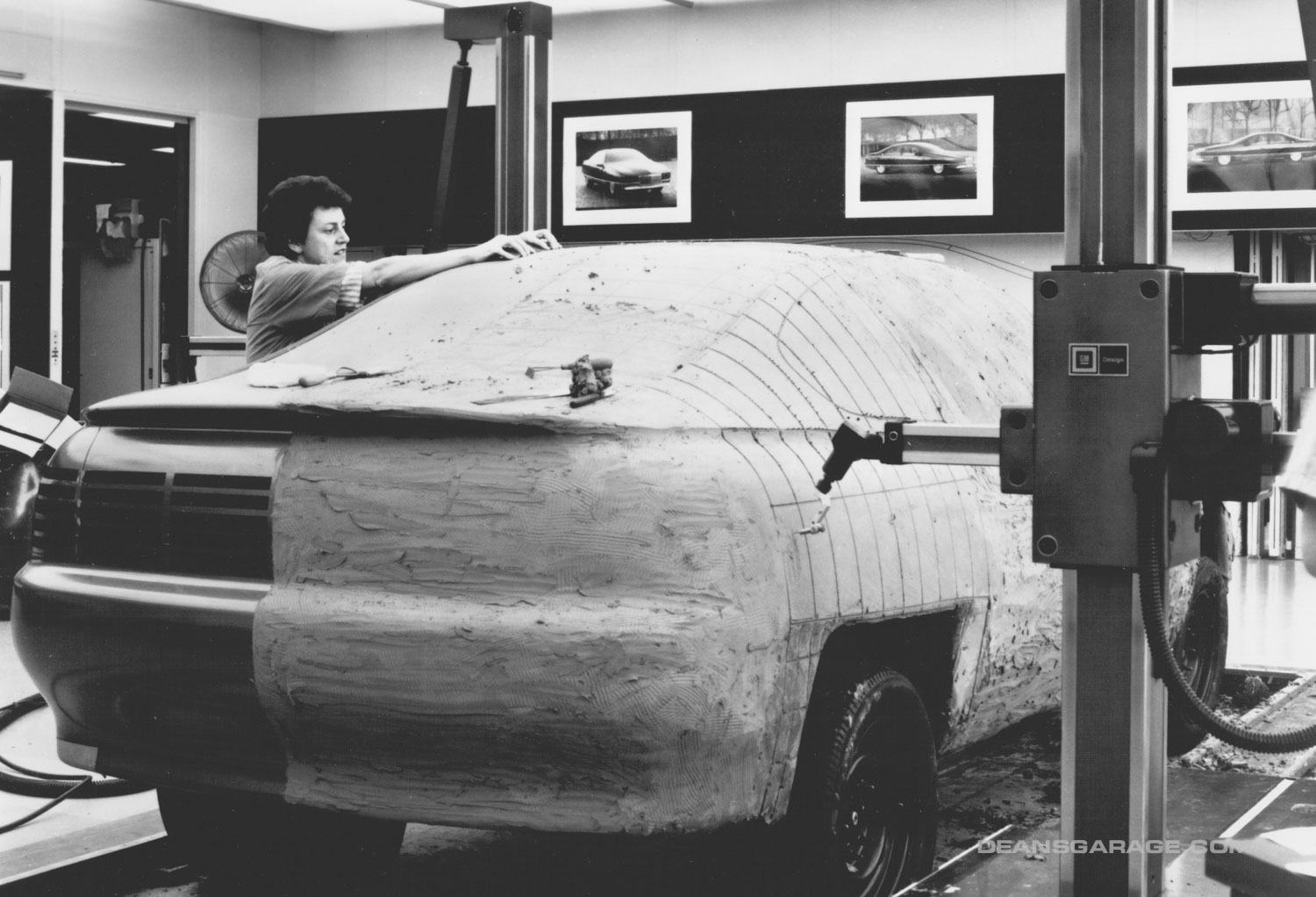
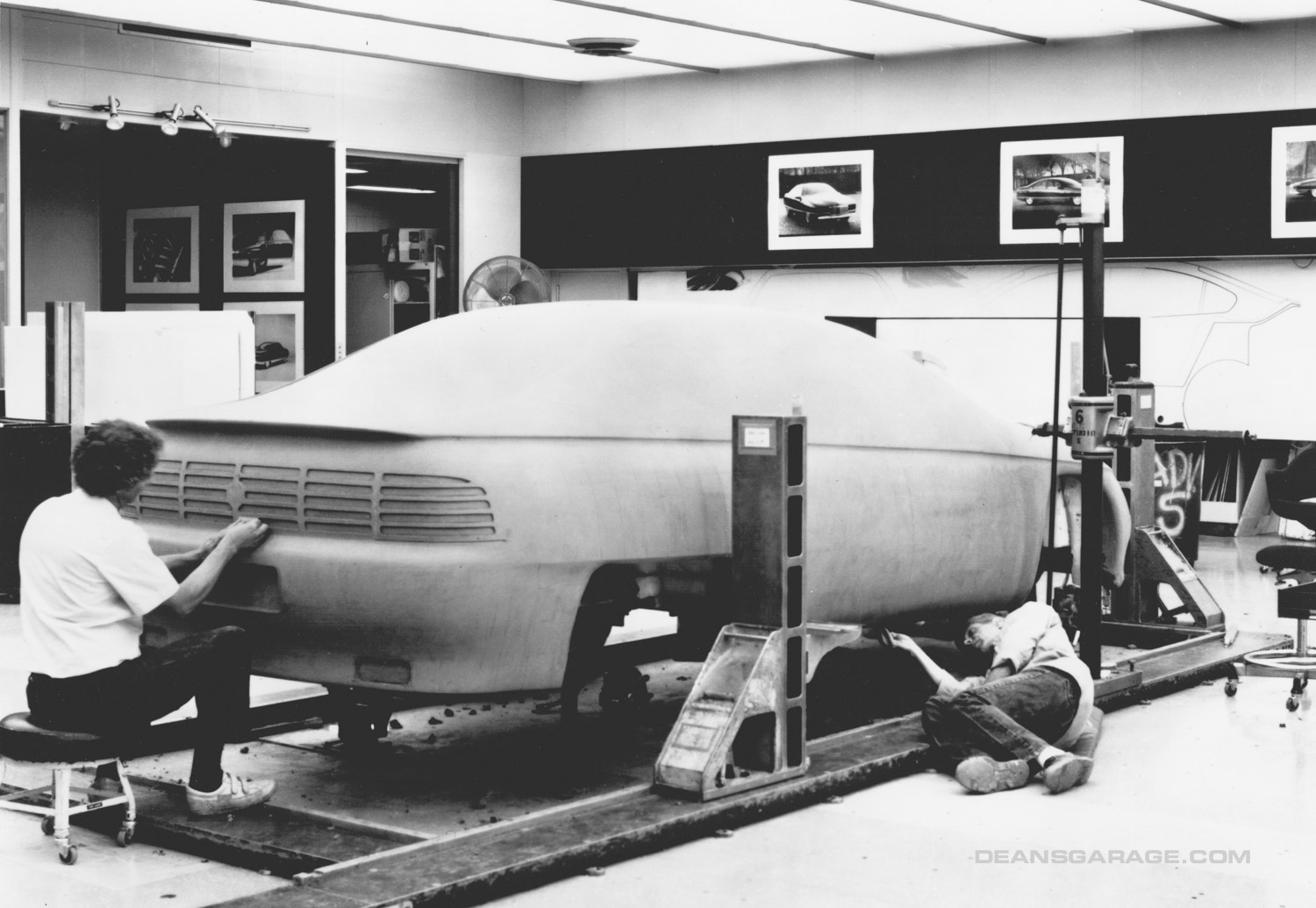
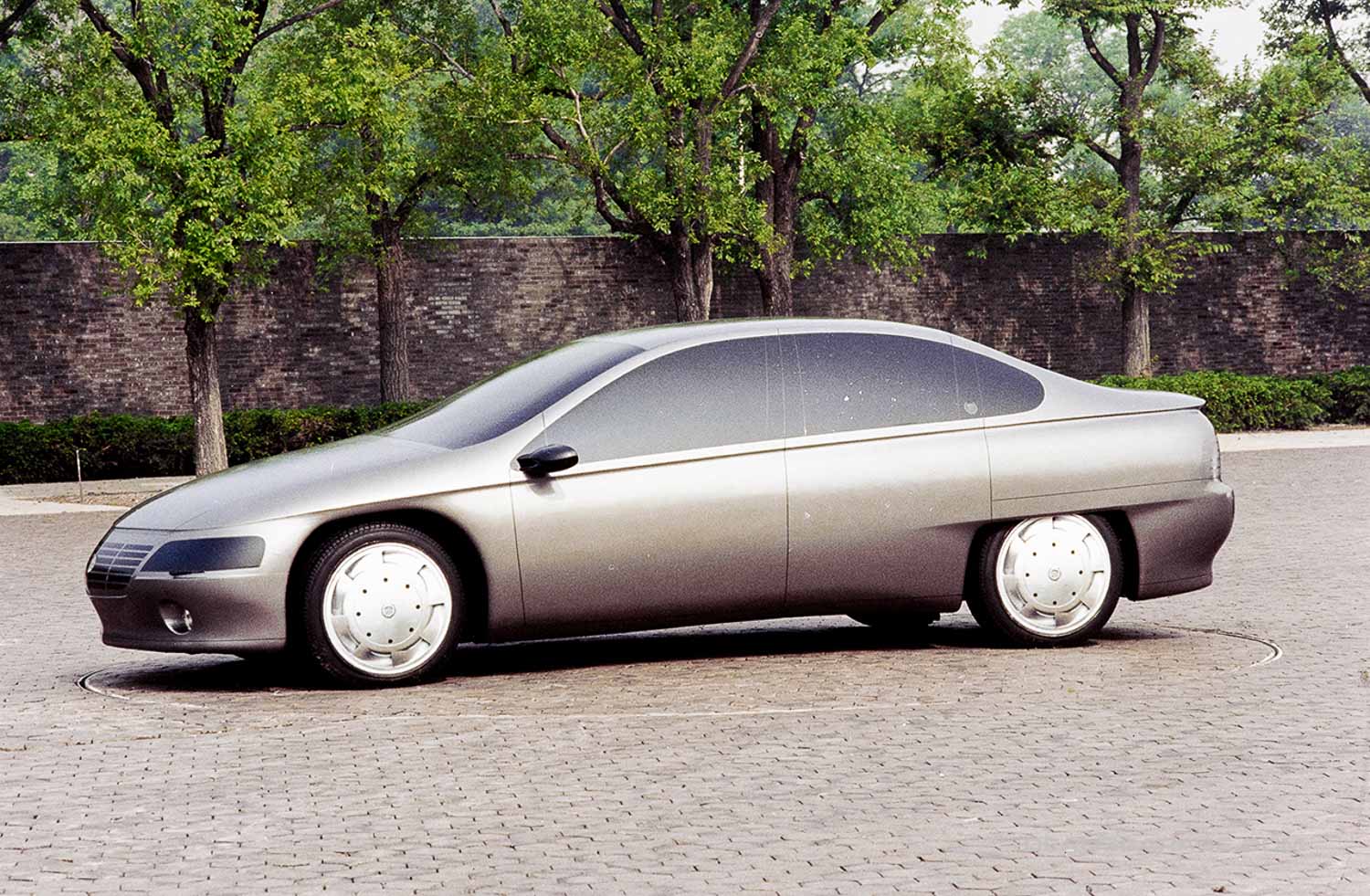
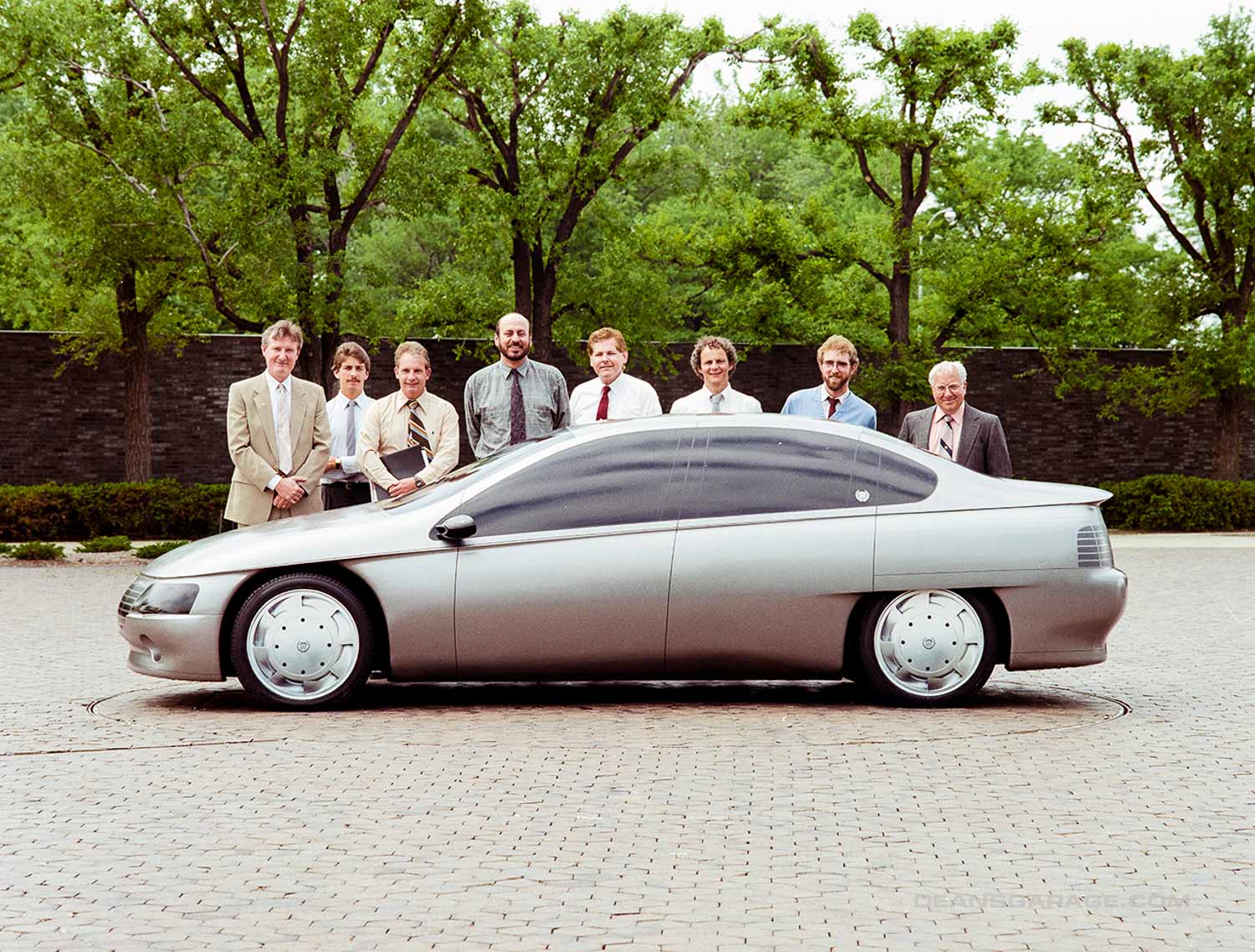
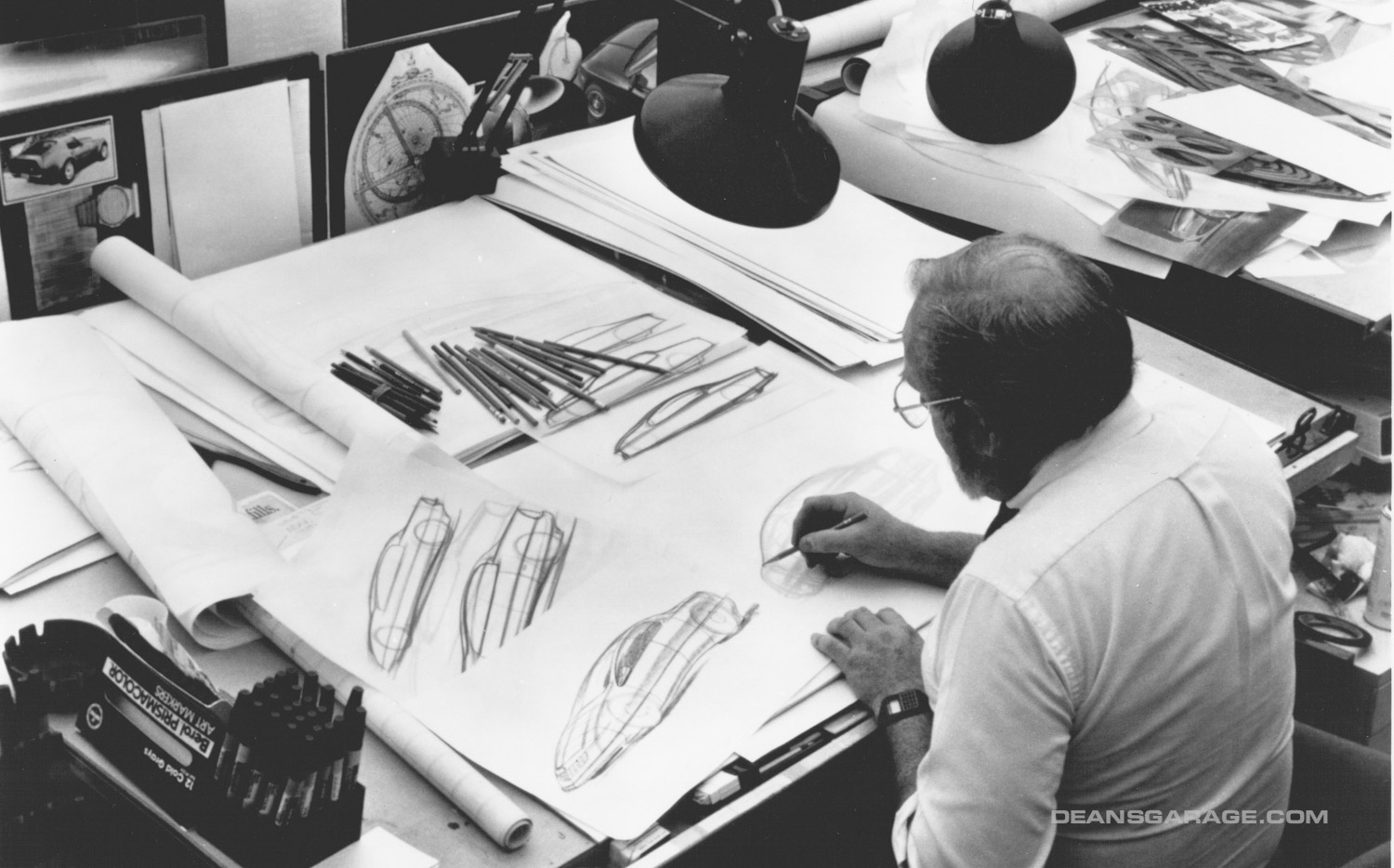
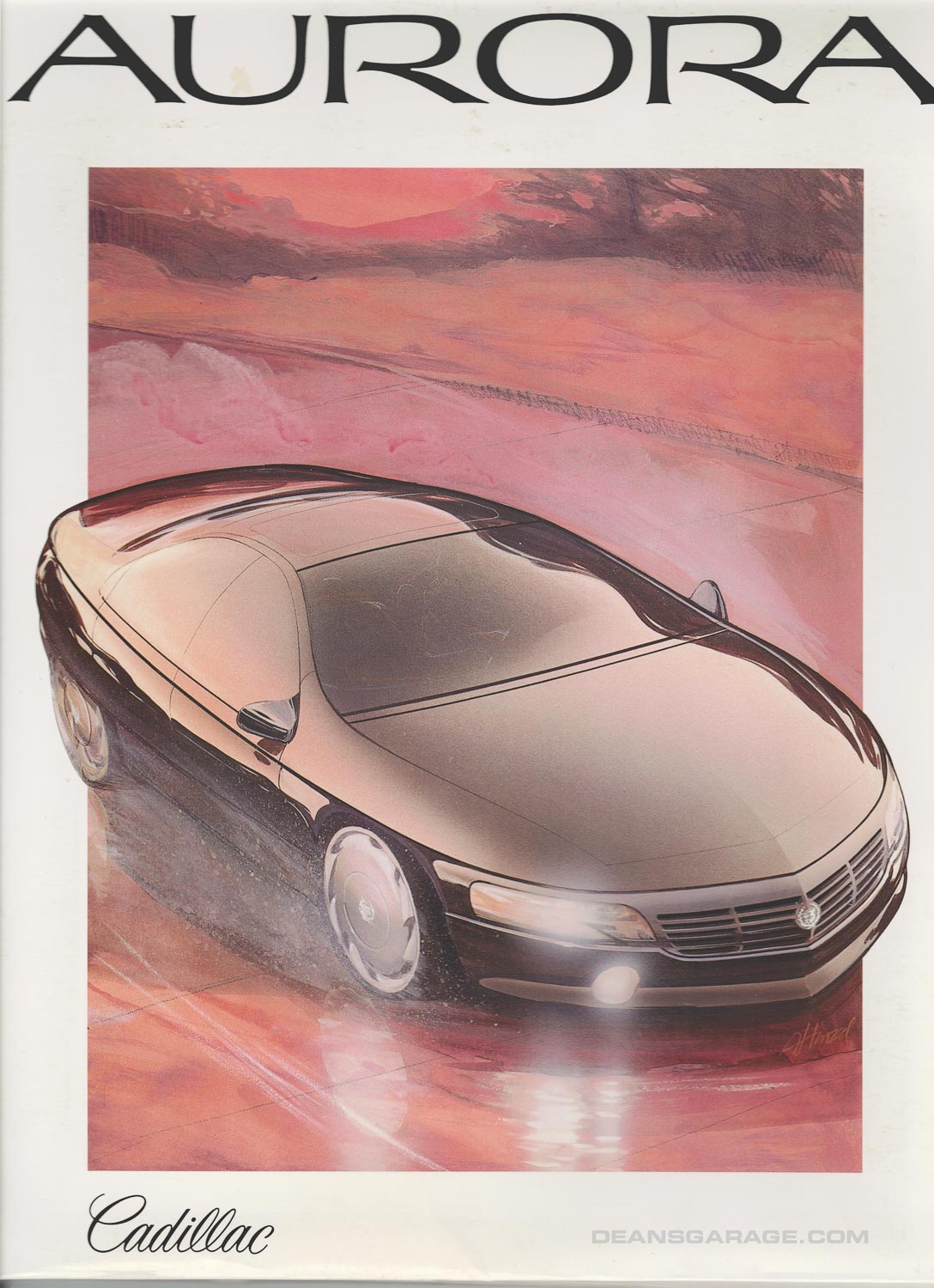
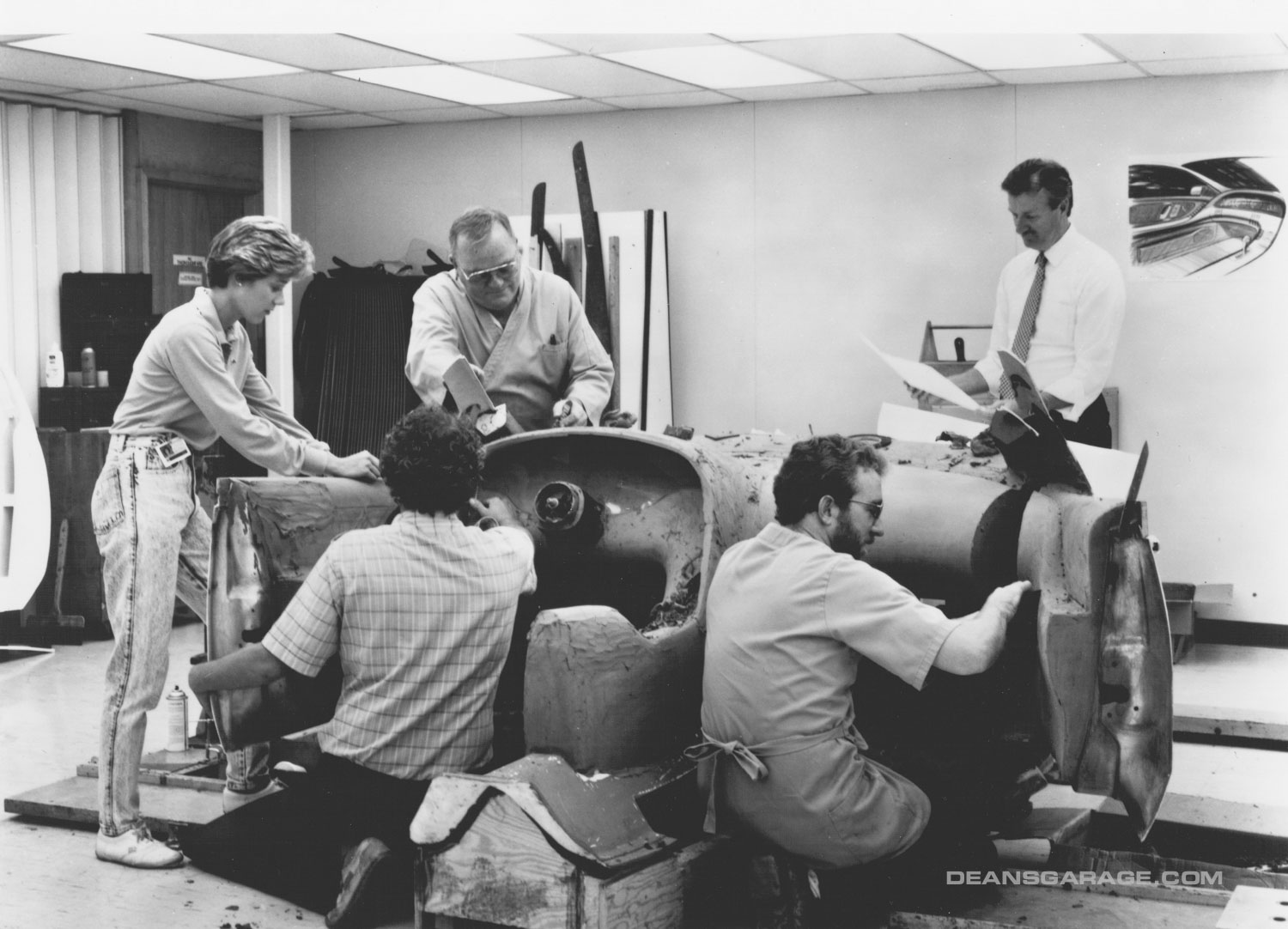
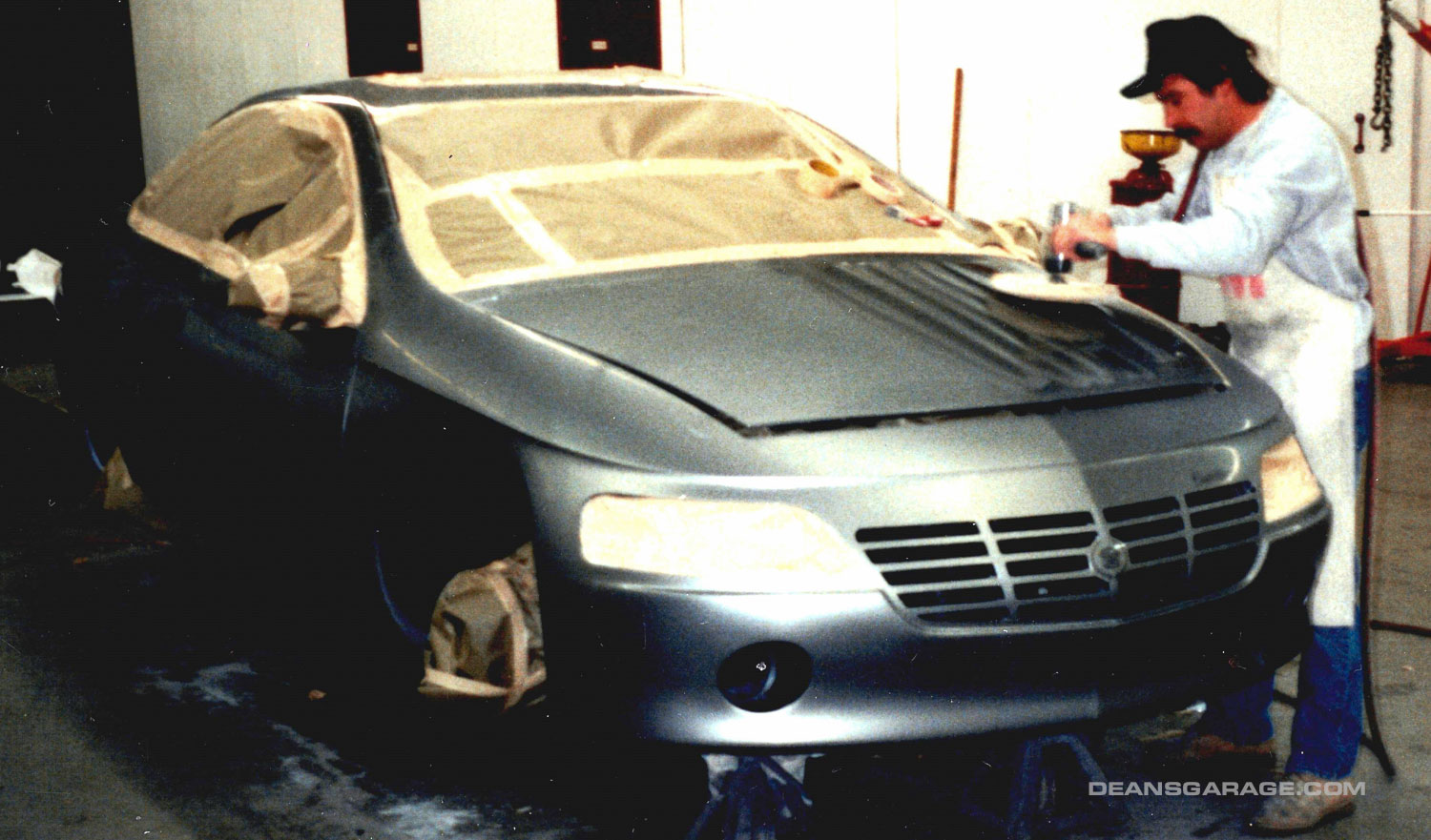
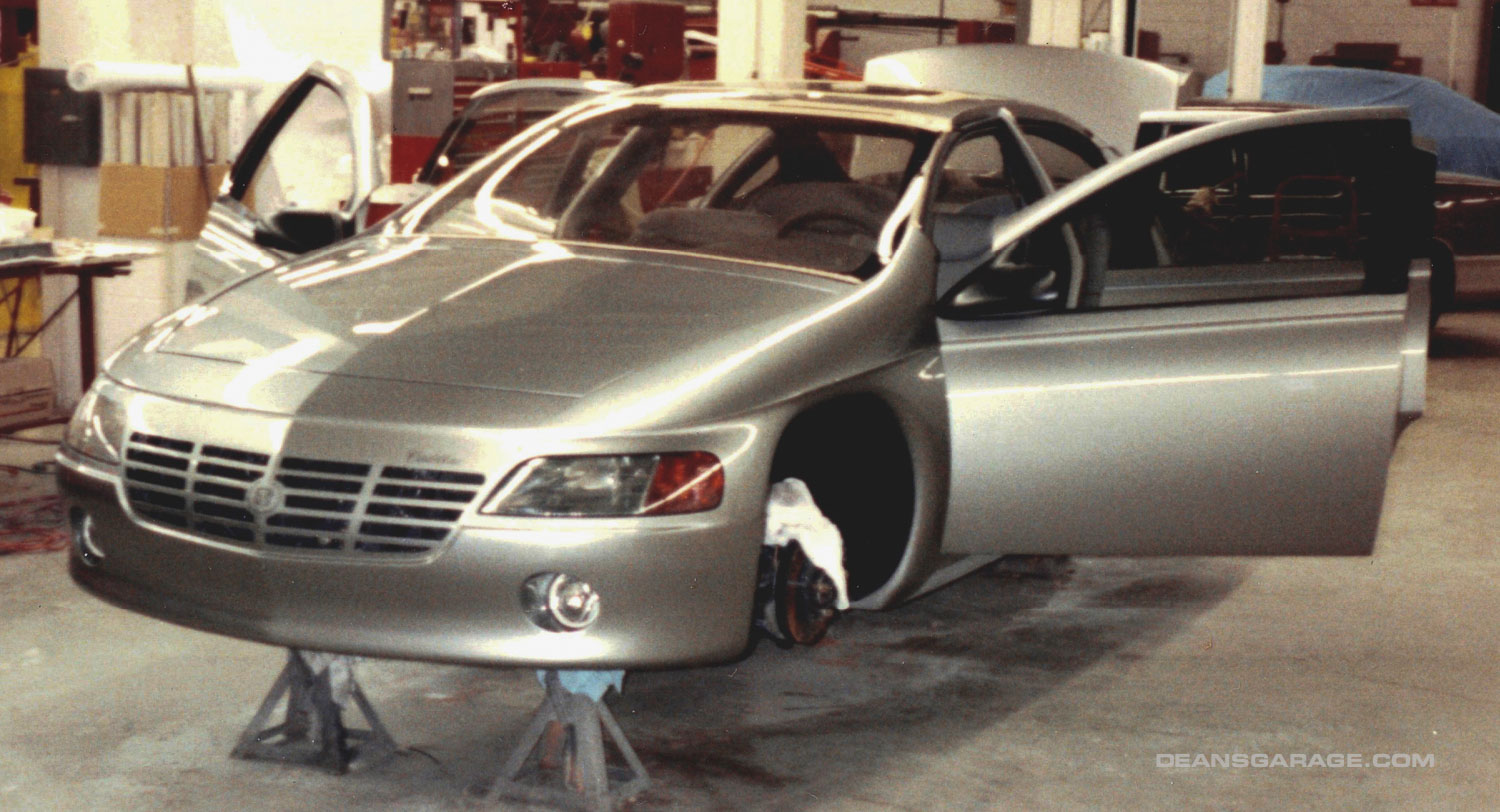
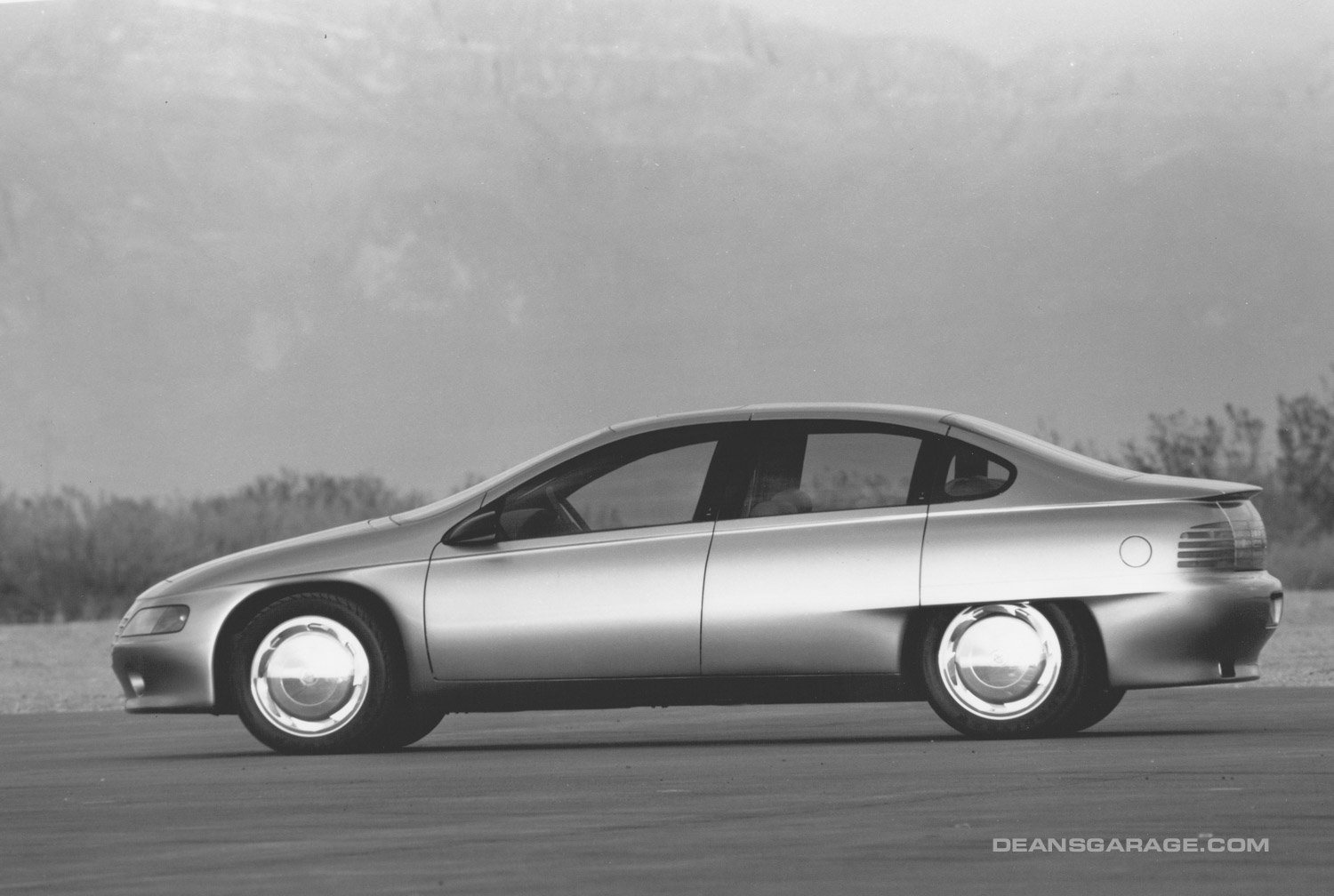
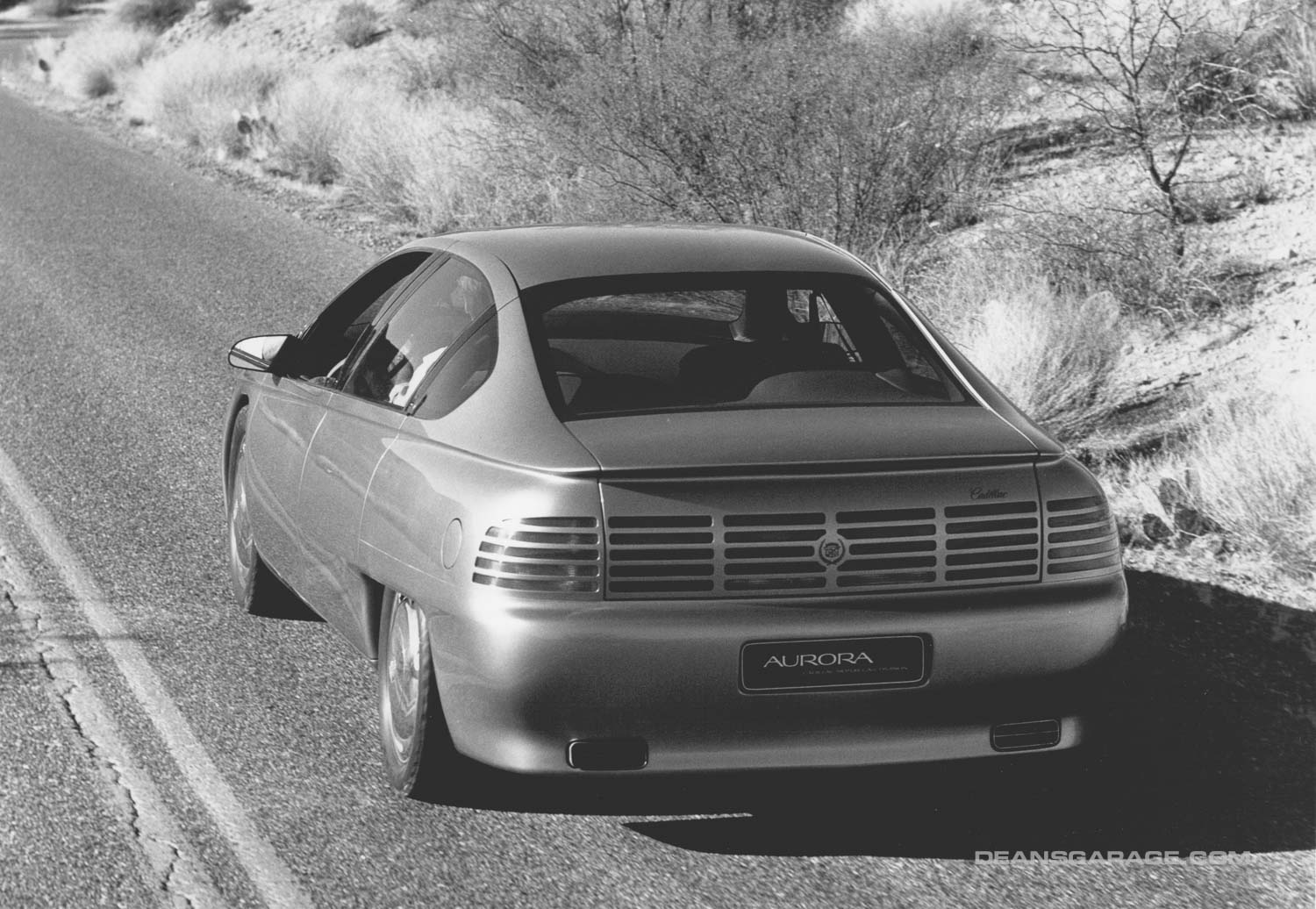
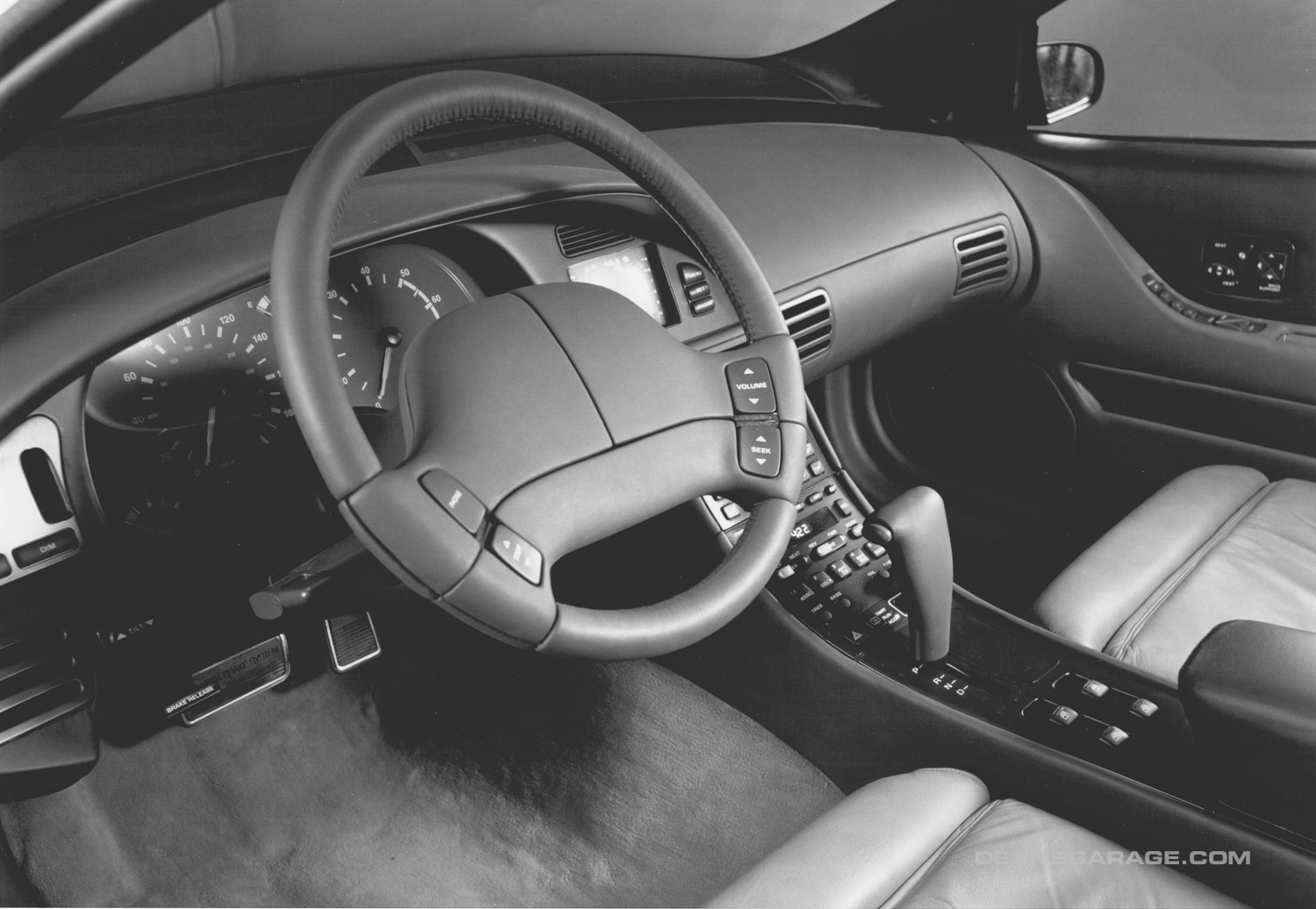
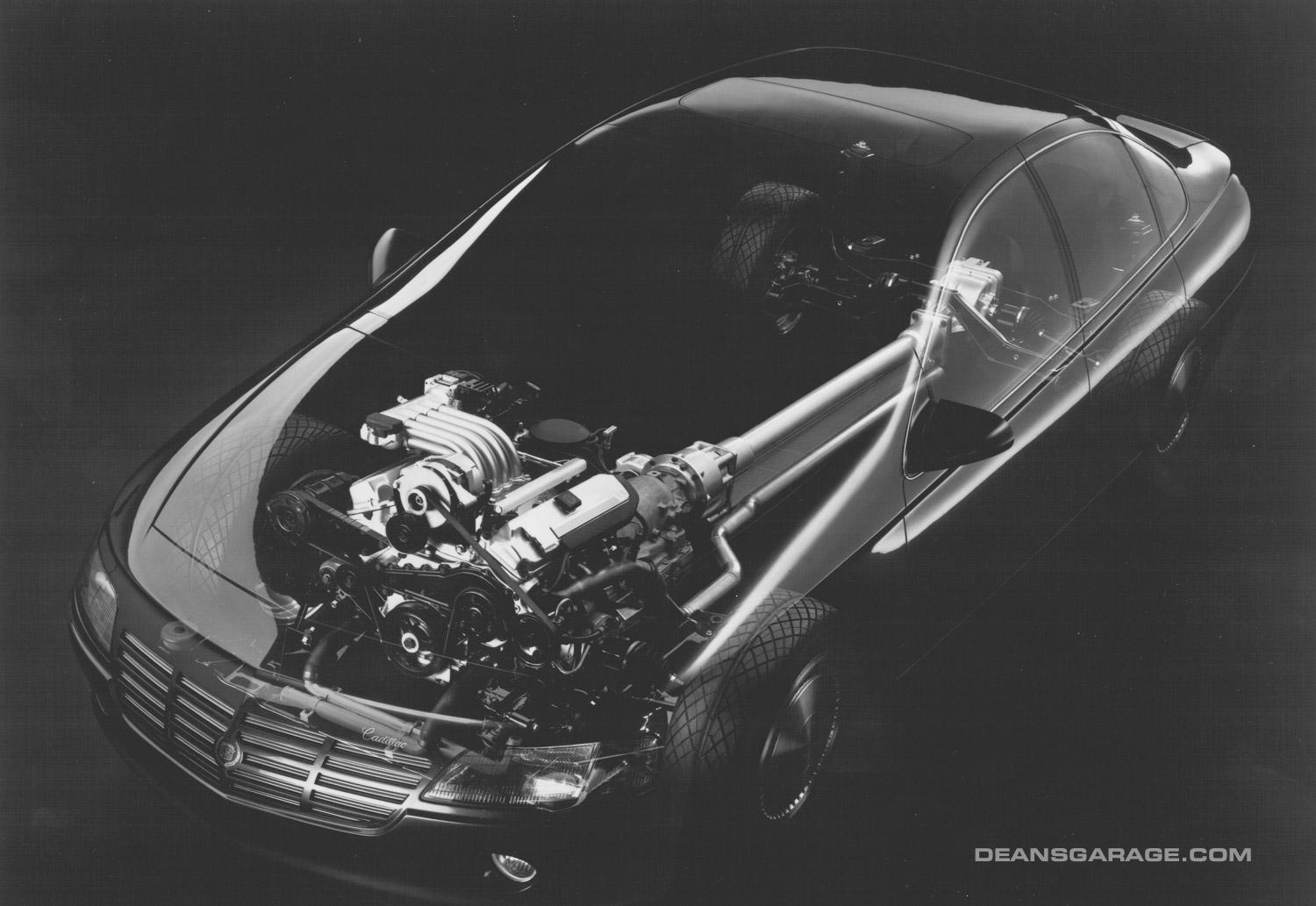
Fascinating! Interesting that Triad were involved.
I wonder if it’s still around?
The Aurora would still be a good design for a electric or hybrid Cadillac to compete with Tesla, etc. Smooth Aerodynamic shape.
Inspired no doubt by the success of the Taurus, this one wound up partially deeded to Olds and the rest to to the Opel-designed Omega B, sold in the US as the Cadillac Catera. Neither the Olds Aurora nor the Catera changed the downward slide of GM against European and Asian competitors.
Those taillights are reminiscent of the 1987 (?) Mustang GT, though less offensive.
With all due respect to the writers of the most eloquent press releases, I find no difference between this so-called Cadillac and a watered-down Mercury Sable. William Shakespeare called such colloquy “Much Ado About Nothing”.
It is much ado about nothing when you start comparing one car design to anther in ignorance. It is very revealing and to really understand the genesis of a design you have had to have some experience in doing it, some valid platform for speculation. That kind of commentary speaks reams about the understanding of design, creativity, how it is achieved and why designers do what they do.
Car design is very much like the mathematics used to express philosophy. Philosophical equations that are similar have similar results, often similar answers. The intention, although not striving to emulate another, can be the same.
Art, like logic often takes a singular path. Intellectual force, creative skill and experience, given opportunity, can result in great design.
It’s the word “can” that is tricky.
Sitting in a scrapyard metal to metal with common junk, sad we don’t appreciate a one of one concept Caddy.